How to Grow and Care for a Wandering Dude Plant
Here’s how to care for this pretty trailing plant.
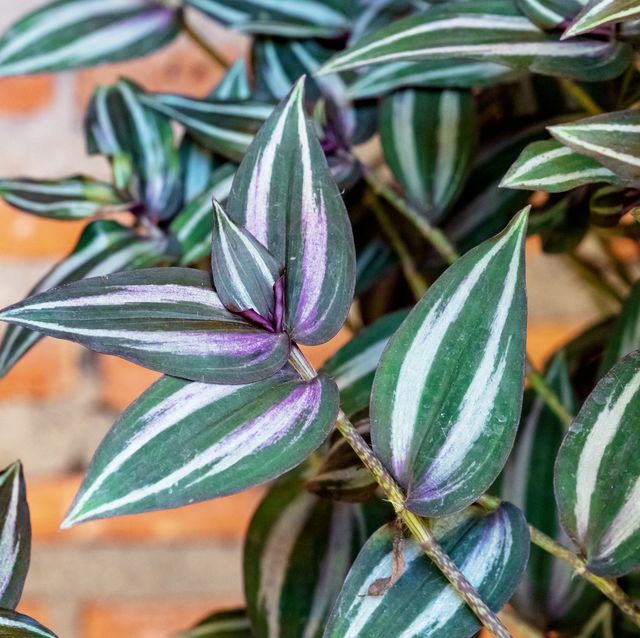
Country Living editors select each product featured. If you buy from a link, we may earn a commission. Why Trust Us?
With its long dangling stems, this plant tends to “wander” all over the place. Today, the plant often is called by its botanical name, Tradescantia, with “zebrina” referring to its silver striping.
It’s sometimes also called silver inch plant, but it can be confused with another plant, commonly called inch plant, Tradescantia fluminensis , which has solid green foliage.
Other varieties of wandering dude have become widely available in recent years, including the very popular nanouk type, which has foliage with pretty pinkish stripes and magenta undersides.
Native to Mexico, Belize, Guatemala and Honduras, the wandering dude usually is grown as a houseplant, but in USDA Hardiness zones 9 to 11 , it can be grown as a low-growing ground cover, too. ( Find your zone here .)
Read more: 15 Common Houseplants to Grow and Brighten Up Your Home
Ahead, learn everything you need to know about how to care for a wandering dude plant:
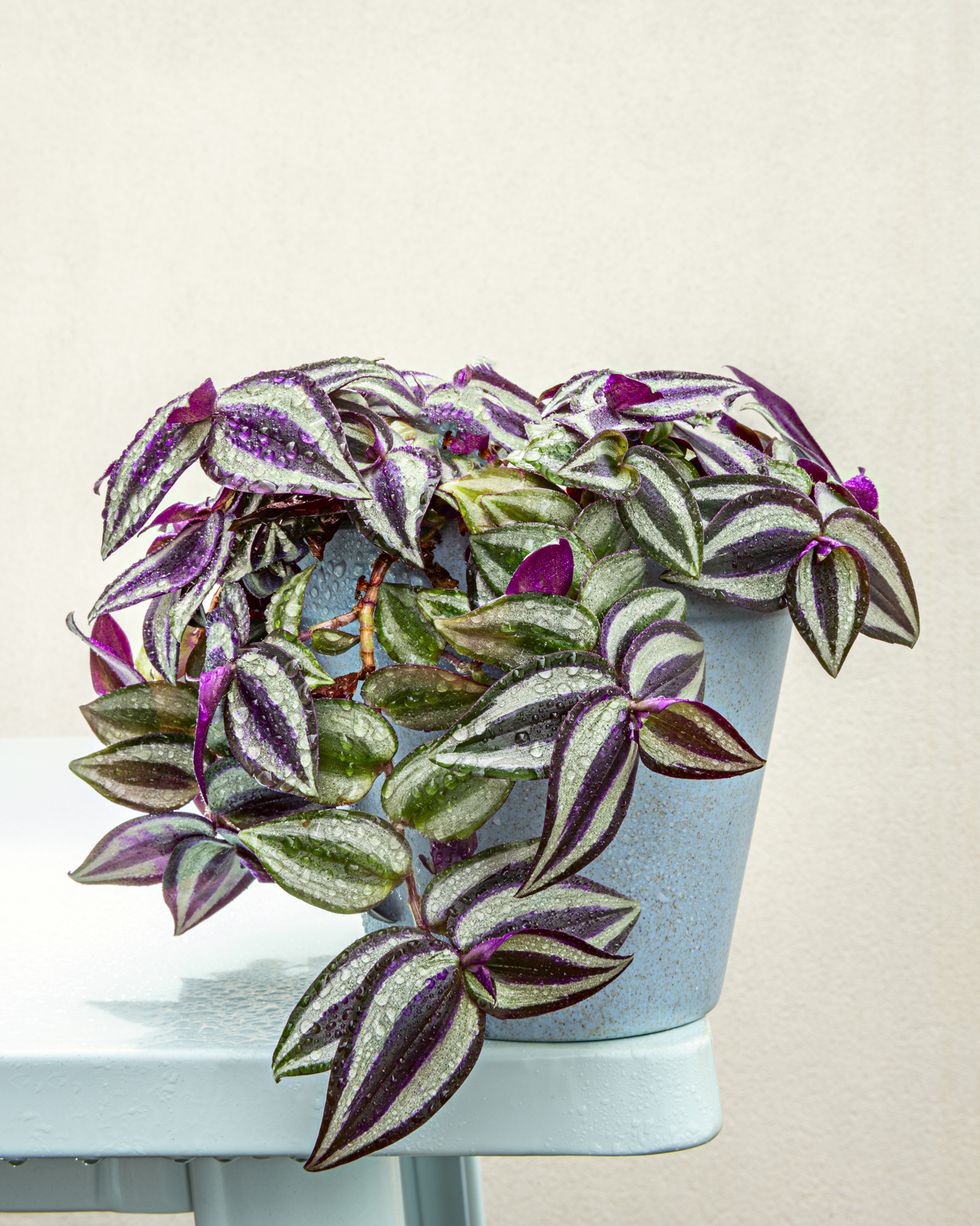

Wandering Dude Basic Info:
- Common Name: Wandering dude
- Botanical Name: Tradescantia zebrina
- Plant Family: Commelinaceae
- Type of Plant: Perennial, grown as houseplant
- Native Origin: Mexico, Belize, Guatemala, Honduras
- Sun Exposure: Full sun to part shade
- Mature Size: 6 inches tall by 1 foot wide
- Toxic to pets: Yes
Why Trust Us
I'm a garden writer with more than 15 years of experience growing houseplants, edibles, and landscape plantings. I also regularly trial new plant cultivars for performance and reliability, and test garden products to evaluate practicality and durability.
How Do You Care For a Wandering Dude Plant?
Give wandering dude bright, indirect light. If it doesn’t get sufficient light, this plant tends to get gangly and unattractive. Its purple coloring also may fade in low light, which means you should move it to a more brightly-lit room or use a grow light.
If your wandering dude is starting to get scraggly, simply snip off a few inches from the end of each stem to help stimulate the plant to push new, bushy growth. You can use plant snips or your fingers. You may need to pinch back frequently because wandering dude is a fast grower.
How Do You Water a Wandering Dude Plant?
You should water only when the plant feels mostly dry. Poke your finger in the soil before watering; if soil clings to your finger, wait a few more days and recheck.
If you let it get too soggy, that’s a sure way for it to get mushy and die. Like most houseplants, it’s better to err on the side of too dry, rather than too wet.
If you like, you can feed this plant with any general-purpose houseplant fertilizer, but it’s not entirely necessary.
Miracle-Gro Miracle-Gro Water Soluble All Purpose Plant Food, 3 lb
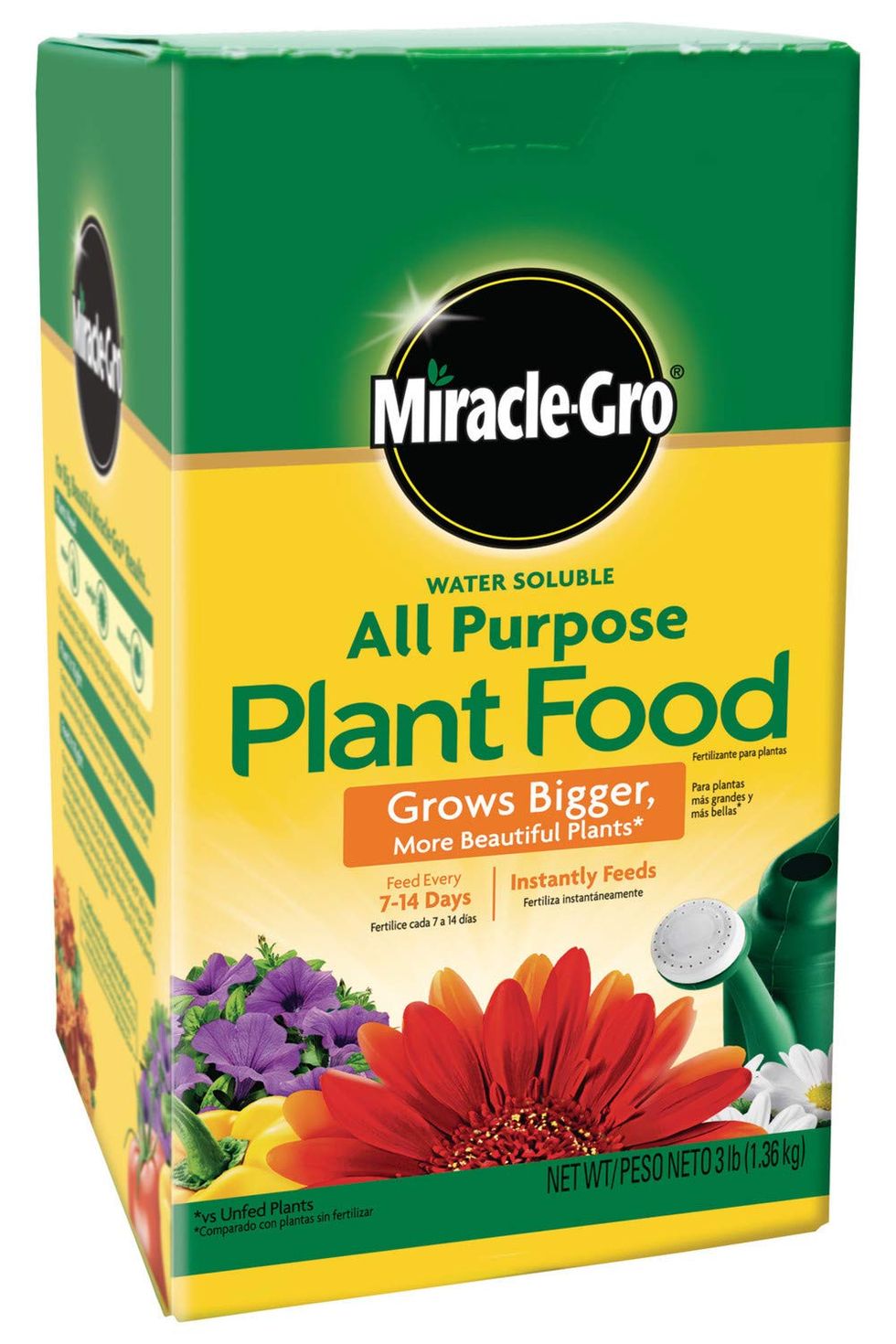
Can You Grow Wandering Dude Plant Outdoors?
Yes, it makes a great trailing plant spilling out of containers! Pair it with tall plants such as hibiscus, canna, elephant ears, or other tall, upright tropicals. If it starts to get leggy, just trim it back. Outdoors, it does best in full sun (northern climates) to part shade (southern climates). It may develop tiny pinkish flowers outdoors, though it rarely flowers indoors.
How Do You Propagate a Wandering Dude Plant?
Like pothos , this is a great plant to propagate to share with friends or to make new plants for yourself. Simply take a cutting, say, if it’s getting too long, then place it in a glass of water to root. Keep it in a bright spot in your home (not direct sunlight), and watch for roots to develop within about two weeks. Then plant in regular potting soil, and keep the soil lightly moist while it settles in.
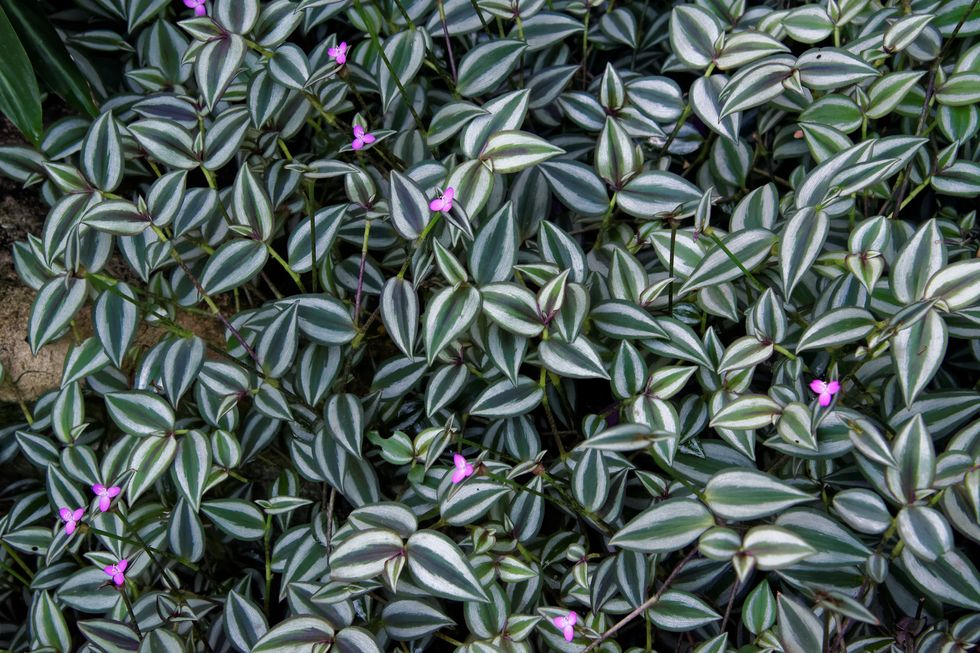
Is Wandering Dude Toxic to Pets?
According to the ASPCA , this plant is toxic to pets and may cause dermatitis, or irritation of the lips and mouth. But remember that any plant may cause vomiting or GI distress if eaten in large enough quantities, so keep this away from pets who are nibblers. Finally, call your vet ASAP if you suspect your pet has ingested it, even if you’re not sure. It’s always better to be safe than sorry!
In addition, the plant sap also may cause skin irritation in some people. Wear gloves when handling cuttings if you tend to have sensitive skin.
Read more: 28 Pet- Friendly Houseplants You Can Grow Without Worry
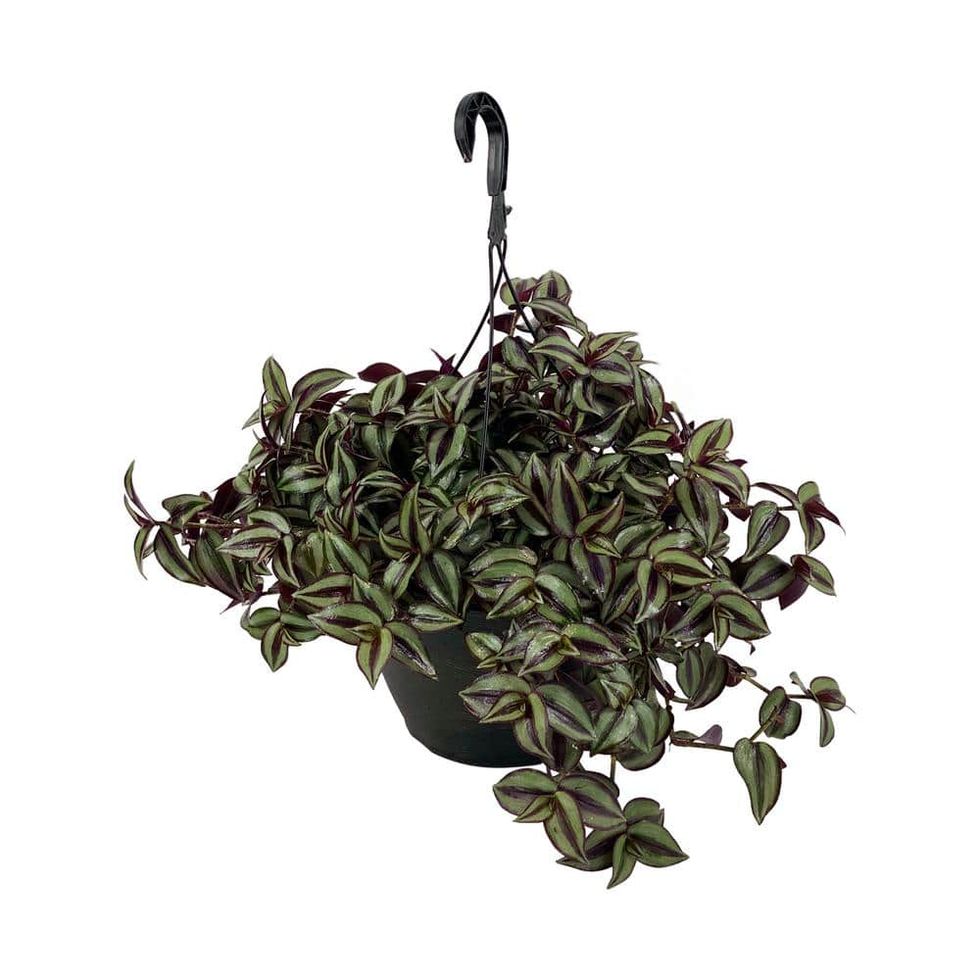
Vigoro Tradescantia in 11-inch Hanging Basket
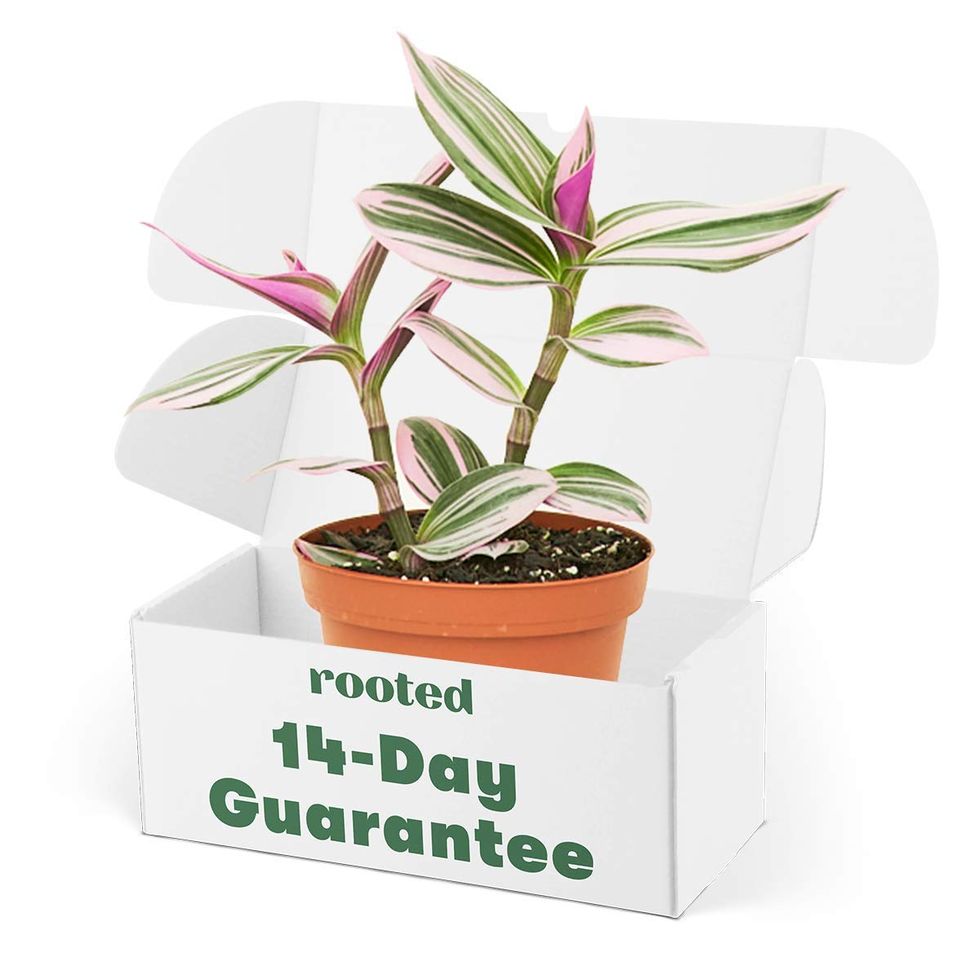
Rooted Tradescantia Nanouk, 4-inch pot
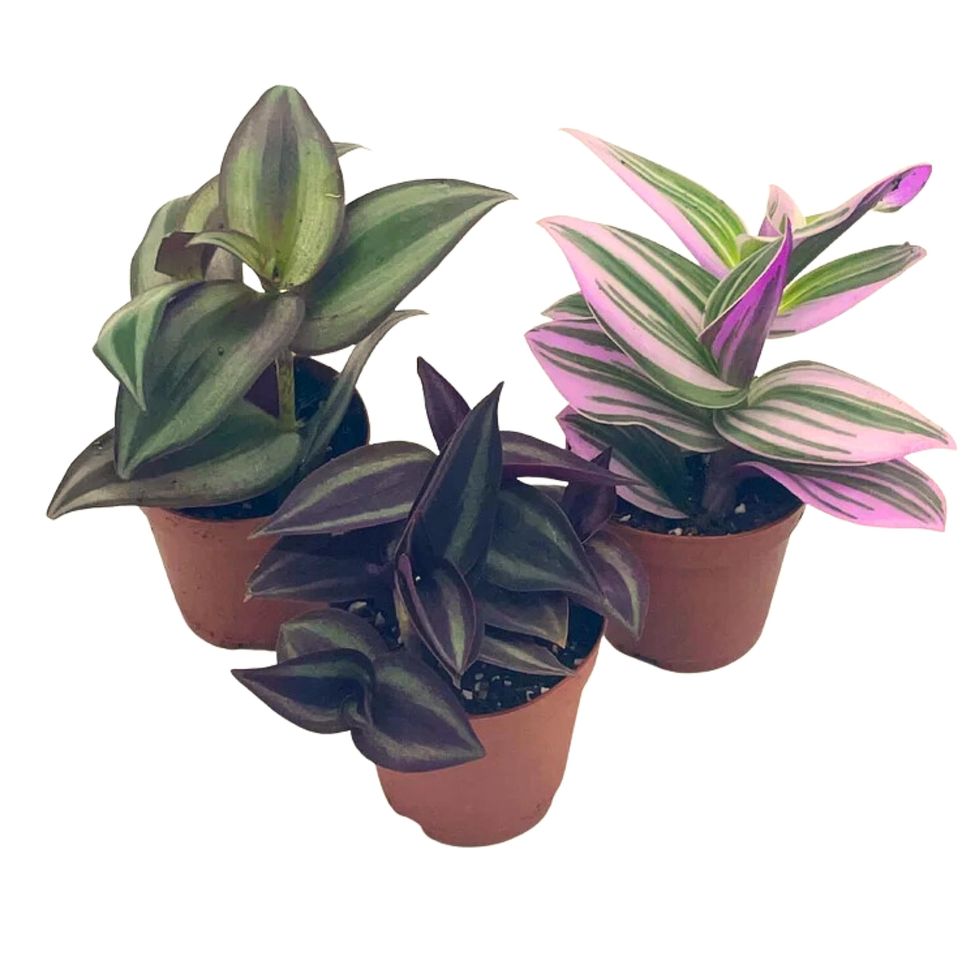
BubbleBlooms Wandering Dude Assortment
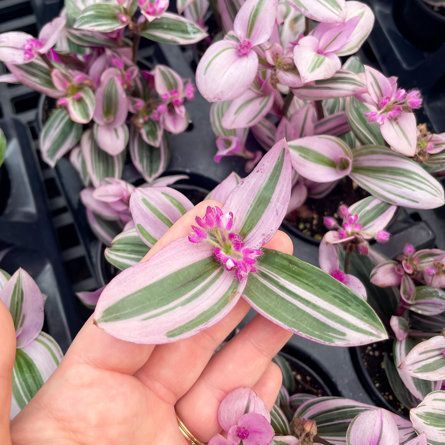
Wayfair Tradescantia Nanouk, 4-inch pot
Arricca Elin SanSone has written about health and lifestyle topics for Prevention, Country Living, Woman's Day, and more. She’s passionate about gardening, baking, reading, and spending time with the people and dogs she loves.
.css-1shyvki:before{background-repeat:no-repeat;-webkit-background-size:contain;background-size:contain;content:'';height:0.819rem;margin-bottom:0;margin-right:-0.9375rem;width:3.125rem;}.loaded .css-1shyvki:before{background-image:url('/_assets/design-tokens/countryliving/static/images/arrow.svg');}@media(max-width: 48rem){.css-1shyvki:before{display:none;}}@media(min-width: 40.625rem){.css-1shyvki:before{display:inline-block;}} Gardening Encyclopedia .css-unxkmx:before{background-repeat:no-repeat;-webkit-background-size:contain;background-size:contain;content:'';height:0.819rem;margin:0.7rem auto 0.9375rem;width:3.125rem;}.loaded .css-unxkmx:before{background-image:url('/_assets/design-tokens/countryliving/static/images/arrow.svg');}@media(max-width: 48rem){.css-unxkmx:before{display:block;}}@media(min-width: 40.625rem){.css-unxkmx:before{display:none;}}

Buying a Ficus Tree? Here's What to Know
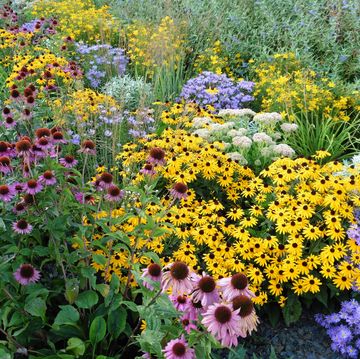
26 Full-Sun Perennials for Your Garden

Got Spider Mites? Here's How to Get Rid of Them
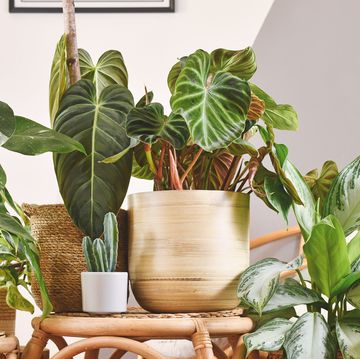
12 Big Leaf Houseplants You Need ASAP
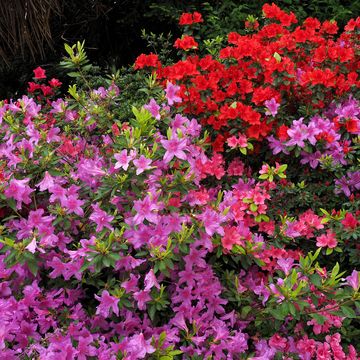
How to Grow Beautiful Azaleas

18 Spring Vegetables That Are Best Right Now

86 Essential Garden Flowers (With Pictures)
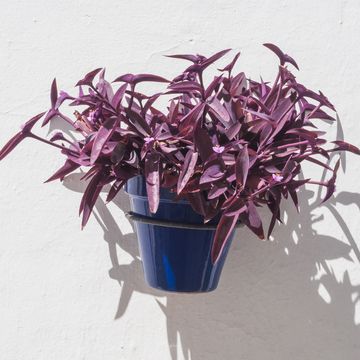
Here's How to Keep Purple Heart Plant Colorful
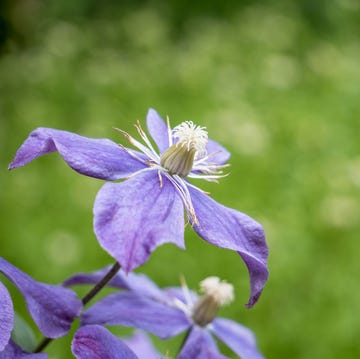
Your Guide to How to Plant and Grow Clematis
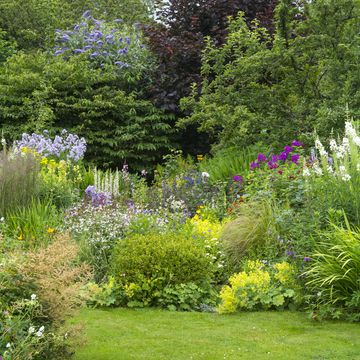
Get Started on Your Spring Garden Plan Now
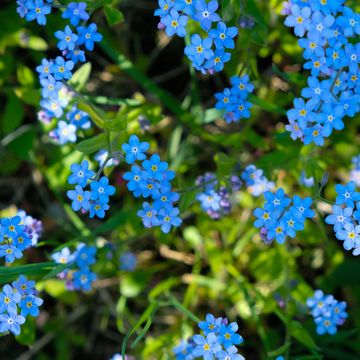
Here's How to Grow Forget-Me-Not Flowers

Order Your Almanac Today!
Caring for Wandering Dudes (Inch Plants)

Sign up for our daily newsletter to get gardening tips and advice.
Growing Wandering Dude Plants (Tradescantia Zebrina): Watering, Propagating, Lighting, and More
Tradescantia zebrina (wandering dude) is a type of spiderwort known for its attractive purple- and silver-striped foliage. This houseplant, also called in “inch plant,” knows how to survive any indoor environment and is perfect for the wanna-be-green thumb! Here’s how to care for an inch plant in your home.
About Tradescantia or Inch Plant
Tradescantia zebrina (pronounced trad-es- KAN -tee-uh zeb- REE -nuh) is a species of creeping plant in the Tradescantia genus. Common names include wandering jude and inch plant. This plant was formerly called Zebrina pendula and wandering Jew. Another common name is Variegated Spiderwort.
While Tradescantia zebrina is a perennial plant in its native Mexico, its treated as a houseplant in North America, and commonly grown in a hanging pot. It is considered invasive species in warm regions outside of their home ranges (including in parts of the southeastern U.S. ). For this reason, we recommend growing inch plants indoors or keeping them restricted to containers outdoors.
Not only does the inch plant have attractive leaves but it’s fast-growing, with trailing stems. Leaf nodes on the stem are supposed to be 1-inch apart, hence the common name inch plant. Each segment is capable of producing a new plant, so Tradescantia is e asily started from cuttings that root readily in moist soil.
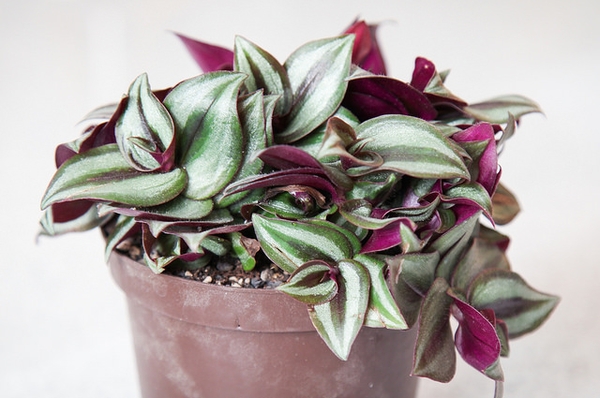
Shamrocks and Four-Leaf Clovers: What's the Difference?
Easy houseplants for your home, 20 easy-to-grow perennial flowers for beginners.
- Grow in all-purpose indoor potting mix in either a pot or hanging basket.
- Select a location with filtered sun. Keep inch plants out of direct sunlight and out of dark areas, which will cause them to become leggy.
- The room temperature should be average (between 55° and 75°F).
- Water deeply, but allow the soil to dry partially before watering again. This plant doesn’t like to dry out, but it also doesn’t like to be constantly wet.
- Water less during the winter months, which is the plant’s resting period.
- Provide fertilizer twice a month in the spring and summer; don’t fertilize in fall and winter.
- Pinch back to keep this trailing plant contained as well as promoting bushier foliage.
- Removed leggy growth also allows for cuttings that can be used for propagation.
- Plants can be pruned back hard every spring and can be taken outside on a protected patio in the summer.
- Tradescantia zebrina ‘Tricolor’ (pictured at the top of this page) has beautiful purple and green leaves with shiny silver stripes.
- Tradescantia pallida ‘Purple Heart’ has fuzzy, purple foliage.
- Tradescantia fluminensis ‘Quicksilver’ has variegated white-green foliage.
- Inch plants can easily be propagated by cuttings. Snip off a piece of the plant (the cutting should ideally be 3–4 inches long) and place the cut end in water. In about a week (or less), the cutting should produce roots. A week or so after that, plant the cutting in a pot according to the planting guidelines above.
- No serious insect or disease problems.
- Aphids tend to be a problem on the stems and leaves. Monitor for aphids (and other small insects), as they could become an issue if unchecked. To get rid of them, pinch off the infected stems and spray the plant with water.
- Root rot and stem rot can occur in soggy soil.
- Note that contact with plant sap causes skin irritations in some individuals.
Catherine Boeckmann

ADVERTISEMENT

50 Fall Flowers and Plants for Autumn!

Top Succulent Plants for the Home

How to Propagate Plants From Cuttings

I am not about to call a plant "dude". Stop being ridiculous, stop with the DIV garbage. Keep your roots.
I love the Wandering Jew hanging baskets. Last year they were priced at $40 a basket and I have 3 baskets and was not paying that much so when it came time for the first frost and the leaves started browning I clipped about 25 or so cuttings and put them in juice glasses on my dining table. I changed the water regularly but the whole winter they stayed in the juice glasses in a place with indirect sunlight. In early spring I transplanted them into the baskets with potting soil and some fertilizer. They were tiny little spindles and now they are thriving! I love them!
We love how quickly the inch plants grow and propagate! Thank you for sharing your story with us.
- Jenn, Associate Digital Editor
A good article on the care of the wandering Jew plant. Although, I would like to add, that the branches of this plant are extremely tender. And you can break them off, just buy a glance. So I would caution anyone, to handle them with care. Once it's established as a full-sized plant, it's a more little hardy. But, as a young cutting. Those stems are very tender.
Just because something has "always been this way" or you're old is not a good reason to continue. We constantly learn and evolve our language. The National Gardening Association (NGA) and a number of professional horticulturalists have acknowledges this. Unless you're a plant person or Jewish, I'm not sure you would know. I'm glad the Almanac's forward thinking and not anti-semitic; it may take a few years for regular people in plant stores to catch up. As someone else said here, "Just because you find something inoffensive doesn't make it so."
The genus Tradescantia commemorates John Tradescant the Elder (1570s-1638). Massively famous and significant. An extraordinary plant hunter and master gardener who began his career as head gardener to Robert Cecil, 1st Earl of Salisbury ... gardener to the royal favourite George Villiers, 1st Duke of Buckingham ... Keeper of his Majesty's King Charles I's Gardens, Vines, and Silkworms ... the Oxford Physic Garden. His royal patrons sent him all over to collect for their gardens and greenhouses -- the Low Countries, Arctic Russia, the Levant/North Africa. With his son, maintained their own garden and museum in South Lambeth, known as the Tradescants' Ark -- the first public museum in Britain. The common house plant under discussion here was sent to him by a friend in Virginia (it is indigenous to Mexico); another friend sent the scarlet runner bean from the West Indies. His son, John Tradescant the Younger, was also a traveller (mostly to North America), plant hunter, master gardener. Their huge museum collection went to Elias Ashmole and became the foundation of the Ashmolean Museum in Oxford. This link lists some of the 750 species they brought to England: https://people.elmbridgehundred.org.uk/biographies/john-tradescant/ They were just as famous for the numerous "rarities" in their large museum of the world, among which is one of the few specimens of the extinct dodo. Their travels explain the "Wandering" part of the houseplant's name. Were they Jewish? If they were Jewish in 17thC England, it would likely have been a private matter. Casual research turns up nothing certain, only this suggestion from a 1638 visit: "The Christian world is also indebted unto that painful industrious searcher and lover of all nature’s variety for the late knowledge of the spiderwort..." -- though that might only signify collection from nonChristian territories. (You can find the whole letter here: https://thejunket.org/2015/01/issue-thirteen/tradeskin/.) But I would like to think they were.
"some PC nonsense... forced on the public" and "a perfectly good name and there's nothing offensive about it"
The name refers alternatively to the legend that a Jew mocked Jesus on the way to the cross and was forced to wander the Earth until the apocalypse or to the supposed itinerant, rootless nature of Jews. There are centuries of stereotypes built around these myths. Please consider that the world is larger than what you know. Just because you find something inoffensive doesn't make it so.
Thank you for the information you provided about the name “Wondering Jew” I did not know this..was very interesting. I was just going to post on social media about my plants didn’t know the correct name I didn’t want to offend anyone reading this put my mind to ease. Again thank so much for your comment.
It has been called the wondering Jew as far back as I can remember how on earth did they come up with the inch plant really!!!
How did they come up with inch plant? It's literally in the article that "Leaf nodes on the stem are supposed to be 1-inch apart, hence the common name inch plant". Yet you think "Wandering Jew" is a great descriptor of a plant? Considering the term is based on anti-Semitism I'm surprised anyone would argue for continuing to use a term once ignorance of it's impact can't be an excuse. To knowingly say that your desire to say words outweighs someone else's desire to not be subjected to casual racism is unbelievably selfish. When offered the chance to be better, to do better, why on earth would you not take it?
- More Comments


Tradescantia Zebrina (Wandering Jew Plant / Inch Plant)
By Tom Knight
About the Wandering Jew Plant
The Wandering Jew , Wandering Dude, Inch Plant , Spiderwort or Tradescantia Zebrina is a houseplant that can be grown in a hanging basket to show off its long beautiful trailing vines or kept contained and compact in a pot.
Very versatile, very easy and very hard to finish off, makes this a very good indoor plant to have around.
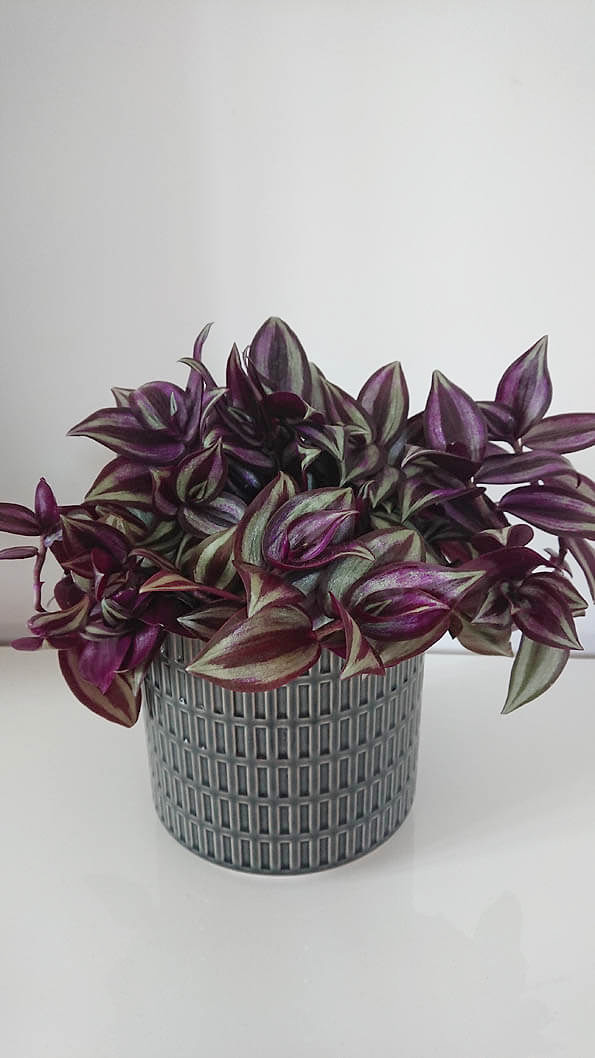
Tradescantia make for excellent houseplants as they fit into almost any design scheme
" Wandering Jew Plant for sale " and " How do I care for my Wandering Jew plant? " are two big hitters when it comes to our visitors asking us questions about this popular and easy care houseplant. We would suggest Amazon.com or Amazon.co.uk or our Where to Buy article to kick start the buying hunt, and our article below will (hopefully) answer the care question for you.
The common names are based around the plant's ability to easily spread itself.
To start things off, a lot of people also want to understand the common names this plant goes by - the Wandering Jew Plant and the Inch Plant . Both names are centered around its ability to spread and grow very quickly, with little care or intervention from people.
Pro Tip - This is truly one of the simplest houseplants to propagate. From taking cuttings, you can have fully grown plants in less than 6 months.
The Wandering Jew is a legend that basically follows that a Jewish man was cursed to walk the earth forever, therefore like this plant the Jew will, in time, eventually go everywhere .
A number of visitors have contacted us to say the use of this common name today could be misconstrued or even upset Jewish people.
Unfortunately we've not been able to find any specific use of this common name being deliberately used by houseplant owners (or the horticultural industry in general) in an anti-Semitic way (from what we've seen at least). When talking about this plant directly even a Rabbi feels that the name is probably not used with conscious anti-Semitic malice .
That being said, the use and choice of words is often important. Our website is about houseplants and the joy they can bring, and without even trying, this hobby is a very inclusive pastime for everyone.
Our communication to you therefore should reflect this. We'll continue to monitor the common name and use one of the alternatives on our social media channels such as Wandering Dude .
The " inch " plant name probably comes from a combination of the stem's ability to grow about an inch every week, and also because only an inch of this plant is needed to propagate itself.
There are several popular varieties of Tradescantia Zebrina for sale each sharing the recognisable glistening leaf surface and purple underside. T. zebrina 'quadricolor' has green, silver, pink and red leaf markings, whereas T. zebrina 'purpusil' has a green and purple blend.
Tradescantia fluminensis is a very close relative to T. Zebrina (or Zebrina pendula as it used to be called) and is also known as the Wandering Jew Plant. Although it's much less popular these days, its care requirements are identical to T. Zebrina except it will cope better with a slightly darker position.
Where to Buy? - Where can you buy all these interesting varieties you ask, that's easy, check out these Etsy Sellers! * You can also find a broad range as well as some more unusual types over on eBay * * We'll sometimes earn a small commission when you buy something through the affiliate links on our site.
It has smaller leaves compared to its bigger cousin and more green in the leaves. T. fluminensis is therefore very plain looking so search out some of the varieties instead such as T. fluminensis 'variegata' or T. fluminensis 'quicksilver ' or T. fluminensis 'Tricolor', these have cream and white stripes to give it a bit more of a visual punch.
You may find several types growing all in one pot for an extra hit. As the care requirements for each is pretty much the same you can leave them clustered together like this (providing you like this look of course).
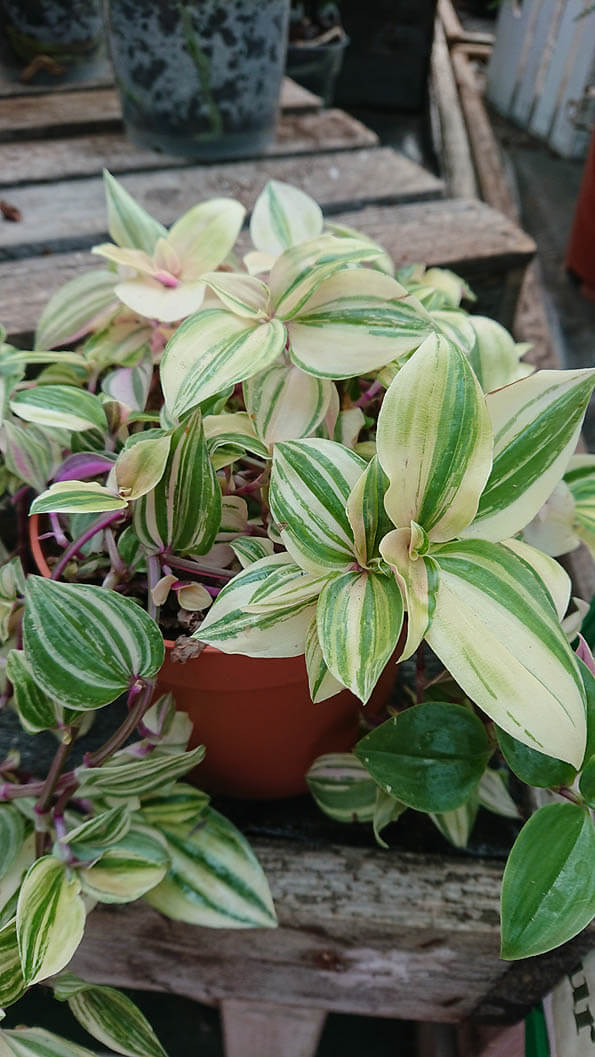
Variegated Tradescantia are becoming much easier to find
We should mention that the Wandering Jew Plant outdoors tends to become an invasive species if not properly maintained, as it's difficult to eradicate because if only an inch of it survives it will live on.
That said, our focus is on the indoor grower and so its potentially invasive nature outdoors isn't a problem. The Wandering Jew Plant is safe to have around cats and people, the sap in the leaves and stems, however, can be irritating so either wear gloves or wash your hands immediately if you come into contact with this.

Hi, I'm Tom!
If you're like me and enjoy the challenge of growing houseplants and getting them to thrive, then Ourhouseplants can help. This website shares my knowledge and years of growing plants and provides (hopefully) helpful advice on properly caring for your indoor plant friends.
Wandering Jew Plant Photos
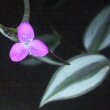
Wandering Jew Plant Care Guide
All Tradescantias including the Wandering Jew Plants need plenty of light to retain the variegated colours on the leaves, if things are too dim these will fade.
On the other side of the coin if too much light is provided leaf scorching is the end result, fortunately however the problem of " too much light " is basically only caused by excessively exposed locations during midsummer.
This is quite hard to provide indoors anyway, so you will only really risk this if you Summer your plants outdoors.
It's important they're placed in plenty of light but protected from very strong sun .
As you would expect from any easy houseplant, the Wandering Jew will cope with droughts and a little water logging from time to time.
Try to avoid this careless watering approach where possible though as a good looking plant needs to be watered correctly. The instruction here is simple, water your Tradescantia regularly and freely during the warmer seasons to try and keep the soil moist for much of the time.
In Winter cut right back because growth will slow or stop completely and the need for water will reduce drastically as a result.
The leaves are almost succulent like and therefore humidity is something you don't have to worry about a great deal. It will be worth misting the plant however if you start to notice the leaves becoming shriveled or brown leaf tips start to appear. You can also grow Tradescantia in an indoor bottle garden .
The opinion is often divided about how much and how often you should feed Wandering Jew Plants.
Some will suggest regular heavy feeding, perhaps as much as every other watering and others will say only once or twice a year at most, otherwise it will encourage the variegated leaves to turn green. The truth of it is that this plant will cope with almost anything you give (or don't give) it.
We fertilise normally (back of the bottle instructions) once a month and the OurHousePlant.com's Inch Plant is as good looking as the day it was brought.
Temperature
Give your plant average warmth conditions for quick growth, a cooler room of around 10°C (50°F) is also suitable too. In fact, the only no no, is exposure to frost or really chilly temperatures for prolonged periods. Frost will do serious damage and chilly locations will cause leaf discoloration.
It's best to repot once a year to give a little more space for the roots to grow, but as with everything else to do with this plant, it will still cope living in the same soil for years. This is handy if you've chosen to grow it in a hanging basket as these can be fiddly to upsize and can also be a little difficult to work with.
When you do repot though, normal potting soil is a great choice, just make sure you avoid mixes with a heavy manure content and don't use ordinary dirt from your yard.
Propagation
When it comes to propagation of Wandering Jews only the Spider Plant is easier and more reliable to work with. The success rate of Spider Plants is something like 99% and the Wandering Jew, 98%, so either way it's still incredibly easy to grow more plants.
You don't need a fancy heat mat or any special containers or tricks. You don't need to use any type of rooting hormone, and it's literally just a case of pushing the cutting a few centimeters into a fresh potting mix, water well and away you go. Trust us, once you know what you're doing it's so easy to do. Below is a break down of each step.
The stems of a mature plant are quite brittle so an accidental knock or an intentional snip on an existing plant will mean you have a Wandering Jew Plant stem cutting almost ready to go.
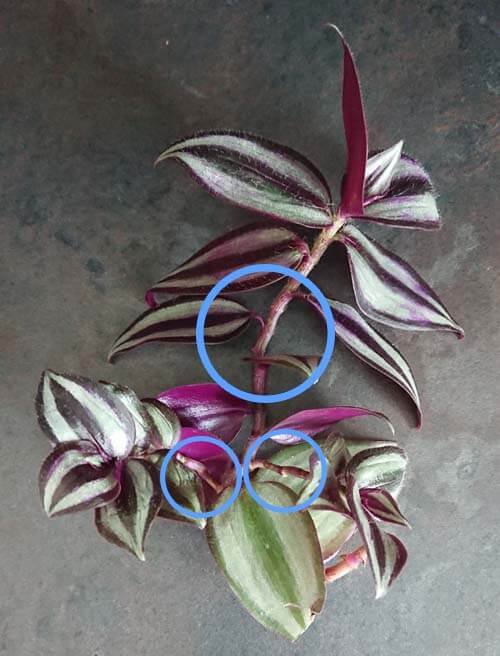
This broken stem can be used to create multiple plants
You don't need to wait for the fresh cut end to dry out so you could just push it into some soil (even in the existing pot where it was growing before if you're trying to recreate a bushy appearance).
But just replanting the large stem is potentially wasteful as there are several individual plants that can be created from a broken stem, like the one shown in the photo, this cutting could easily become three plants.
The photo above shows three sturdy stems with blue circles around them. Snip them off, making sure each is an inch long and has at least one leaf , although ideally for quicker results you will want a cutting that is several inches long and several leaves already in place.
Trim off any leaves on the lower part of the cuttings , because if any leaves touch the soil they will quickly rot, which could then cause the entire cutting to fail. Instead, remove the lower leaves and discard any unused material.
Below you can see the results of the above instructions - Three cuttings created from the original big one that are now ready to be planted up.
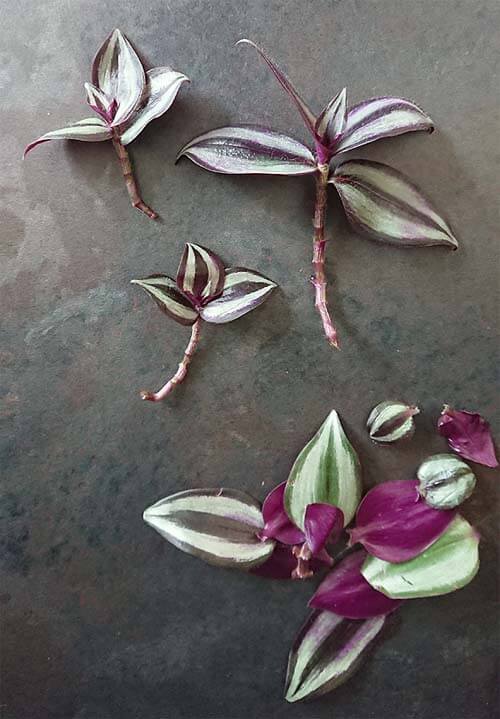
Several sections have been created and the lower leaves removed
Simply fill a container with potting soil or compost and wet it before inserting the stem ends into the soil. Make sure the cuttings are reasonably stable and fixed in place as they need good contact with the soil to stimulate root growth.
Pro Tip - Cuttings will take time to become bushy and to fill a pot by themselves, so because of the ease at which propagation can be done it's usually more effective to take several cuttings and put them all into the same pot.
You can use a rooting hormone, but we've found standard cuttings root with a very high probability anyway so don't bother.
Cuttings do much better if they don't touch each other and if they're planted towards the edges of the container rather than right in the center. Doing this will discourages rotting and the outer edges tend to be warmer than the very heart of the pot which gets the roots growing faster.
Once in place keep the soil moist (but not wet or soggy) and keep the plant warm. New growth should appear in just a few weeks. If you decided to grow several cuttings in a single pot and you notice any gaps later on, you can just push in new cuttings whenever needed to make it bushier.
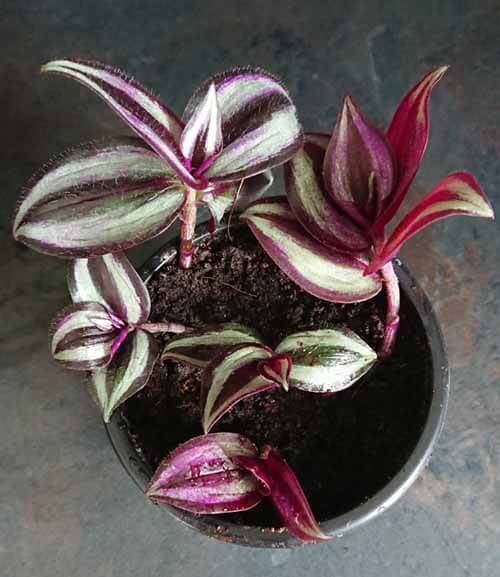
The cuttings planted up into a pot of compost
You can, of course, grow your individual cuttings in their own pots if that's what you'd prefer to do, but by putting several together like in the photo above it will mean after just a few months this pot will be completely covered with new growth.
All these cuttings will have knitted together nicely to give the illusion of one full plant when in fact it's actually several. This is something that would take almost a year or more if you're going for one stem cutting per pot.
Speed of Growth
The growth rate of Wandering Jew Plants when temperatures are warm is fast. As much as an inch a week in the growing seasons, if good light levels are provided and its watering needs are being met.
Its natural tendency is to "vine" and spread out, so if you aren't growing this in a hanging basket or you want to grow a neat compact looking plant then you must prune regularly to keep it tidy (don't forget the pruned stems can be used to propagate new plants).
Height / Spread
The height of this plant won't ever go beyond 6in / 15cm however every single stem can eventually grow to 6ft / 1.8M.
This type of spread might be what you're looking for of course i.e. if you want it to trail down from a hanging basket perched up high. However the stems can always be kept shorter by pinching out the growing tips on a frequent basis.
The Wandering Jew Plant is another houseplant that is grown for it's foliage rather than the flowers it produces, however they can still add a nice touch when they appear.
The pink or purplish flowers these plants produce will be small and can appear at any time of the year, although it's much more likely in late Spring early Summer.
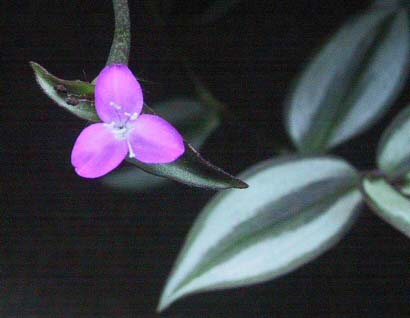
Inch Plant's aren't normally grown for their flowers, but they'll still bloom indoors sometimes
Are Tradescantia Plants Poisonous?
Generally speaking, Tradescantia is very mildly toxic to pets and people.
While it does little harm if eaten, the sap within the leaves and stems can cause contact dermatitis on the skin, especially in those with sensitive skin or those with an allergy . Wash your hands quickly after handling and you shouldn't have any issues.
Anything else?
Your plant is looking tired, it's become leggy and unattractive, convinced you have done something wrong you Google " Wandering Jew care instructions " to try and find out how to fix things. The answer you'll find will be pretty much the same everywhere because as any seasoned owner of this plant will tell you, this " look " is inevitable.
The vines grow long and quickly. Over time as they age the older leaves yellow and fall off creating the appearance you feel you've caused through poor treatment, which isn't usually the case.
Basically what's happened is that the plant has pushed and spread itself away from the pot it was growing in.
You can start again by taking cuttings and next time prune more frequently to encourage everything to keep closer, compact and neat.
Caring for Wandering Jew Plants Recap
Good Light Needed To keep the beautiful markings you need to provide good to bright light. Avoid direct sun exposure and low light conditions.
Average Watering Tolerant of a wide range of watering styles, it secretly wants to be well watered and for the soil to be moist for much of the time.
Average Temperature Provide temperatures at or above 18°C ( 65°F ) for best results.
Feeding Feed the soil once a month during Spring and Summer.
- No direct sunlight or low light positions
- Do not try and grow your plant in very cold places
Wandering Jew Plant Problems
Normally this is down to age, the oldest leaves will yellow and fall naturally. Although if this happens and you notice there are limp stems too then this is likely to be caused by quite prolonged and extreme underwatering.
Leaves changing to green / lost variegation
Although you can buy a green leaved variety of Wandering Jew, the majority are variegated and therefore if the leaves are changing colour this is obviously a problem.
The cause is almost certainly too little light. Overwatering can dull the colours but this doesn't make them go completely green. The cure therefore is to move the plant to a brighter area in your home.
Crispy brown and translucent leaves
Sometimes you'll find dead brown crispy leaves or some leaves going yellow or translucent, as shown in the photo below.
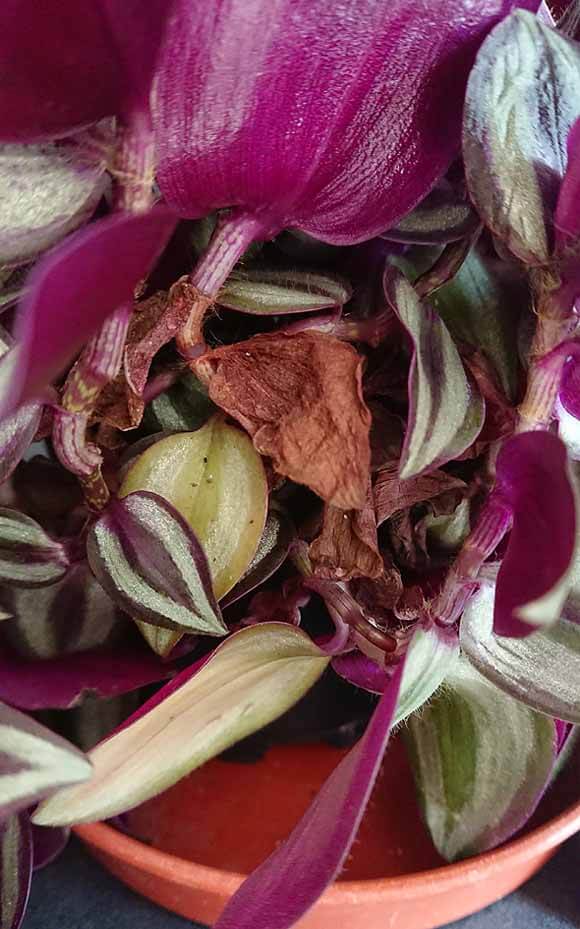
Tradescantia houseplant with unhappy leaves
This is going to be caused by one of the following (or in some cases a combination).
- Natural Ageing . Close to the heart of the plant tend to be the oldest leaves which are likely receiving very little light due to the shade from the canopy of the outer leaves. It's sensible for the plant to shed these leaves as they're not serving any propose. These leaves should pull off easily, so just remove them.
- Too much light . Excessive direct burning sunlight will quickly scorch and destroy the leaf. These plants want bright light but not full sun.
- Underwatering . Too little water can cause leaves to crisp and dry out. Make sure you're giving your plant ample water during the growing months.
Wandering Jew Plants love water when growing strong, but as with the majority of indoor plants too much watering will eventually rot the stems. Keep the soil moist not water logged.
Bare spindly and / or leggy growth
This is typically the issue discussed in the " anything else " section above, i.e. this appearance is usual after the plant is quite old. It may also be caused however by too little light (the variegation will have faded also), too little water on a regular basis (accompanied with yellowing leaves), or not enough fertilizer .
Wandering Jew Plant leaf tips are brown and shriveled
Although quite unusual in most homes this is caused by placement in a room with very low humidity, i.e. the air is too dry. You might also be trying to grow your plant next to a heat source like a fire or heater.
Either move the plant somewhere else or follow some of our tips to increase humidity in the home. You should resolve this quickly as your Wandering Jew Plant will also be easy prey for Red Spider Mite infestation.
About the Author

Over the last 20 years, Tom has successfully owned hundreds of houseplants and is always happy to share knowledge and lend his horticulture skills to those in need. He is the main content writer for the Ourhouseplants Team .
Also on Ourhouseplants.com
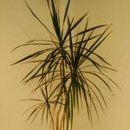
(Article / Gallery) Photo credit of the Wandering Jew T. fluminensi to LucaLuca (Article / Gallery) Photo credit of the Wandering Jew flower to Ruestz
About Ourhouseplants.com
Our website is for anyone looking for success with indoor gardening.
With care guides and information about all popular indoor plants, we're here to help get your houseplants thriving. From the beginner to the more experienced, there's something for everyone.
As a Team, we've almost 50 years of hands-on experience and various horticulture skills. So let us help you to grow your knowledge and become a houseplant expert.
Six Reasons You Can Trust Us
- Recent Updates
- Privacy Policy
- © OurHouseplants.com - 2013 - 2024
Grow. Play. Every Day!

- House & Home
- Houseplants
Wandering Jew Care: How to Grow a Long and Luscious Inch Plant (Tradescantia Zebrina)
Tradescantia zebrina (commonly known as wandering Jew, spiderwort, or inch plant) is popular for a reason: This beginner-friendly houseplant is low-maintenance and grows quickly. It’s also super easy to propagate more plants so you can fill your home with more of the colorful striped foliage the species is known for.
Written by Linda Ly

When it comes to vigorous, colorful, and easy-to-grow hanging houseplants, there aren’t many that can compare to Tradescantia zebrina (known more commonly as wandering Jew—and I’ll touch on the history of that name below). Whether you’re a houseplant beginner or a veteran, most indoor gardeners have owned one of these potted plants at some point.
Keep reading for everything you need to know about Tradescantia zebrina and growing this stunning houseplant in your own home.
Disclosure: If you shop from my article or make a purchase through one of my links, I may receive commissions on some of the products I recommend.

About inch plants
Natural habitat.
Tradescantia zebrina is a native of Central and South America, from Mexico down to Colombia, as well as the Caribbean. Here, it forms part of the undergrowth in lightly forested and often very moist areas. It can form very dense, wide mats thanks to its creeping growth pattern and ability to throw roots extremely quickly.
Unfortunately, its vigorous growth has also made Tradescantia zebrina an invasive plant in some regions. This includes Hawaii, Brazil, and Australia, where the species easily takes hold in moist, forested areas.
As a 2019 study carried out in the Brazilian Atlantic Rainforest notes, this is problematic due to the species choking out native plants.
Some of the above was caused by careless gardeners allowing bits of the plant to get into the wild, where they quickly root. If you’d like to grow spiderworts like this one in your garden, please make sure to dispose properly of any trimmings left after pruning!
This also applies to zebrina’s popular cousins, like Tradescantia fluminensis, T. pallida, and T. spathacea.
Description
It’s not difficult to see why Tradescantia zebrina gained popularity as a houseplant. Wandering spiderwort plants (not to be confused with spider plants , another beginner-friendly species) are low-maintenance and grow just about anywhere—they even just grow in water !
Easy care and quick growth aside, spiderworts are also just good-looking plants. The pointed, oval leaves on thin, fleshy stems overlap slightly and are characterized by their zebra pattern in purple and silvery green. The leaf undersides are deep purple in color and the tiny, three-petaled flowers are bright pink.
Although this species is naturally a creeping plant, it’s often grown indoors in hanging planters. As long as the plant is provided with enough light, the foliage will be very dense and brightly colored, forming a spectacular waterfall that can reach more than 3 feet in length.
What’s in a name? In the case of common houseplants, sometimes a lot.
Tradescantia zebrina is a classic houseplant (I found mention of it in a 1964 German book about houseplants, but it’s probably been around longer than that!) and among most English speakers, it has long been known as wandering Jew. This is probably a reference to the “wandering” nature of the plant, as it does have a creeping growth pattern.
The legend of the wandering Jew is hundreds of years old and is now commonly considered to be rooted in antisemitism. It describes a Jewish man cursed to walk the planet until the Second Coming because he taunted Jesus on his way to the cross.
Because of this, the plant name has partly fallen out of fashion and has been the source of much debate in the plant world over the past few years.
Some plant enthusiasts have embraced the alternative “wandering dude,” which I personally think is a great option.
“Inch plant” (houseplant enthusiasts don’t agree on whether this refers to the fact that it can grow an inch a day, or that you only need an inch of stem to propagate it), “spiderwort,” or “wandering spiderwort” are also popular alternatives, though these are common names for other Tradescantia varieties, such as Tradescantia Nanouk.
The best way to avoid any confusion is to just stick to the scientific name.

Inch plant varieties
There are three subspecies of inch plant (wandering Jew): Tradescantia zebrina var. zebrina, var. flocculosa, and var. mollipila. Unsurprisingly, after it having been a popular houseplant for so many years, nurseries have also managed to create a whole bunch of cultivars through selective cultivation.
A few of the popular Tradescantia zebrina cultivars you may come across in your local plant store include, but are certainly not limited to:
- Tradescantia zebrina ‘Quadricolor’: Yep, as the name suggests, this one adds an extra color to the mix. The leaves are cream, pink-purple, light green, and dark green.
- Tradescantia zebrina ‘Burgundy’: Characterized by its very dark purple coloration.
- Tradescantia zebrina ‘Silver Plus’: Less purple, more shiny silver.
- Tradescantia zebrina ‘Red Gem’: Less silver, more intense (light) purple.
- Tradescantia zebrina ‘Purple Joy’: Less silver, more dark purple.
- Tradescantia zebrina ‘Tikal’: A rare, naturally occurring variety that collectors pay a pretty penny for.
Do keep in mind that most of these cultivars aren’t patented and the amount of mislabeling and variation within a cultivar are both huge. Just growing your wandering Jew in lower-light conditions can completely change the way it looks, so it’s not surprising that confusion sometimes reigns supreme.
Luckily, care is the same across all cultivars, so your best bet is to just enjoy your plant even if you’re not sure what Tradescantia variety you’re dealing with!
Where to buy wandering Jew plants:
- California Tropicals
- Daylily Nursery
- The Green Escape

Caring for an inch plant
Light and temperature.
It’s important to provide your Tradescantia zebrina with enough light. It’s tempting to use plants to brighten up dark, shaded spots in your home, but that just doesn’t work with this one: It loses its dense growth pattern and beautiful coloration in low light.
To prevent your wandering dude plant from growing sparse and green, place it near a window that gets bright indirect light. Some full sun isn’t a problem either, but do make sure you acclimate it gradually to a higher light location.
Temperature-wise, this species is a lot hardier than many of the tender tropicals we like to grow in our homes (like Anthurium andraeanum and Begonia maculata ).
Wandering dude plants can handle a very wide range of temps, making it perfect for those chillier windowsills that your other plants may not appreciate. Room temperature is ideal, but anything between 50°F to 85°F will keep them happy.
Water and humidity
Your Tradescantia zebrina will appreciate lightly moist soil. You can water a bit more during the summer months, when the plant is actively growing and needs a lot of moisture, and less during winter, when soil tends to take significantly longer to dry.
If you’re not sure whether it’s time to water your wandering Jew plant yet, you can always turn to the age-old trick of sticking a finger in the soil.
- If it still feels damp, wait a little longer, until the first inch or two has dried.
- If it feels bone dry, you’ve waited too long; you may also see limp leaves on your plant at this point. It’ll bounce back, but not always without lasting damage.
- If the soil feels wet, you watered too much and need to keep an eye out for root rot.
As for humidity, given its rather wet natural habitat, wandering Jew does appreciate higher air moisture levels. The great thing is, though, that it doesn’t demand it. As long as you keep its soil lightly moist and the air isn’t extremely dry, your plant should do well.
Soil and planting
Wandering Jew is not fussy about its potting mixture at all. I’ve grown it in pure houseplant potting soil with no additives. If you do want to take things to the next level, you can add some perlite and/or peat moss, although this is really not a must.
Most houseplant enthusiasts like to place their wandering Jew in a hanging planter so they can enjoy the look of the leaves cascading down. This is not a must, though. You can also emphasize the species’ creeping growth habit by filling up a large, shallow planter, growing it in a terrarium, or even keeping it in water on a semi-permanent basis.
Recommended products for wandering Jew plant care:
- FoxFarm Ocean Forest Potting Soil
- Espoma Organic Potting Mix
- Perfect Plants Organic Perlite
Fertilizing
Like most other houseplants, Tradescantia zebrina appreciates a bit of fertilizer during the growing season, which extends from spring to early fall. You can use a normal houseplant fertilizer according to the instructions on the bottle.
Don’t fertilize during the winter months unless your plant is growing well. It doesn’t need extra nutrients if it’s inactive.
Recommended fertilizers for wandering Jew plants:
- Houseplant Resource Center Liquid Fertilizer for Houseplants
- Instant Biologics Instant Plant Food (Fizzing Nutrient Tablets)
- Maxsea All-Purpose Seaweed Plant Food
Pruning
There’s a good chance you’ll have to prune your Tradescantia zebrina regularly, because as I mentioned, this is a very quick grower. It also roots very easily, so any trimmings can be replanted! I’ll describe how to do this in the section on propagation below.
Aside from stem trimming, you can remove any dead leaves, which are bound to pop up from time to time in very dense plants like this species.
Dividing or repotting
Inch plants don’t grow by producing plantlets at their base like many other houseplants (such as spider plants ) do. Instead, inch plants spread by rooting along the stems.
This means that division is not really the way to go; keeping these plants manageable is usually done through pruning. You can shape your plant by pinching off any long, leggy stems to create a fuller appearance and control its spread.
You’ll notice that Tradescantia really doesn’t mind being a bit cramped in its planter. Still, it’s a good idea to provide your plant with some fresh soil every year or two by repotting it.

Propagating an inch plant
If you’ve never propagated a houseplant before, this is truly one of the best species to start with. It’s known for rooting extremely quickly in both water and soil, meaning it’s easy to fill endless planters to keep or give away.
All you need to propagate your Tradescantia zebrina is a pair of clean scissors. Here’s how you do it:
- Snip the ends off existing branches. An inch or two with a few leaves works best.
- Remove the leaves at the bottom so part of the stem is exposed.
- Place the cutting in a glass of water to root or plant it directly in soil. You can put cuttings back in the mother plant’s pot to give her a fuller appearance on top.
- It can take a little longer during the winter months, but the first roots should appear within a week or so. You can give soil cuttings a slight tug to verify they’ve rooted.
- Once the first signs of new foliage appear, you’ll know your propagation attempt has been a success!
- If you propagated in water, you can leave the rooted cuttings in water almost indefinitely, although you can also pot them up in fresh soil.

Common questions about inch plant care
How do i make a wandering jew plant bushy.
By their very nature, wandering Jew plants are not bushy. Their creeping growth habit means they naturally grow leggy over time, especially in containers.
However, you can mimic a fuller appearance by strategically pinching off any long, spindly stems to shape the plant more. These stems can also be replanted near the mother plant.
As the baby plants grow, they’ll help fill in sparse areas and create the illusion of a bushy wandering Jew.
How long do wandering Jew plants live?
Wandering Jew plants have a limited lifespan of just a few years, and as a potted plant, you’ll notice your wandering Jew becoming very leggy after just two to three years.
Unlike other fast-growing plants that benefit from pruning, cutting back a wandering Jew doesn’t work well to renew its growth; it simply controls the spread.
The best way to keep your plant coming back year after year is to propagate new plants from stem cuttings, which—fortunately—is super easy with a high success rate.
Is wandering Jew perennial?
Wandering Jew (Tradescantia zebrina) is a trailing evergreen perennial in its native habitat (USDA hardiness zones 9 through 12). Where it’s not winter hardy, wandering Jew is grown year-round as a houseplant.
Are wandering Jew plants toxic to cats and dogs?
Wandering Jew is not considered outright toxic, but it can cause some skin irritation. If your pet gets into your plant, don’t worry too much, although it can be a good idea to have a look in its mouth to make sure there’s no excessive swelling. Be sure to offer water. To prevent skin rash, it can be a good idea to wear gloves if you need to handle your wandering Jew plant. This especially applies if you have sensitive skin.
https://www.cabi.org/isc/datasheet/110354
Racism in Taxonomy: What’s in a Name?
Chiba de Castro, W. A., Xavier, R. O., Garrido, F. H., Romero, J. H., Peres, C. K., & da Luz, R. C. (2019). Fraying around the edges: negative effects of the invasive Tradescantia zebrina Hort. ex Bosse (Commelinaceae) on tree regeneration in the Atlantic Forest under different competitive and environmental conditions. Journal of Plant Ecology, 12(4), 713-721.
Encke, F. (1964). Pflanzen fur Zimmer und Balkon; Auswahl, Pflege, Vermehrung.
I'm a plant lover, passionate road-tripper, and cookbook author whose expert advice and bestselling books have been featured in Time, Outside, HGTV, and Food & Wine. The National Parks Cookbook is my latest book. Garden Betty is where I write about modern homesteading, farm-to-table cooking, and outdoor adventuring—all that encompass a life well-lived outdoors. After all, the secret to a good life is... Read more »
We bought a full grown Bolivian Jewel mid summer last year. It was in a 14” raised pot and flowing 2 foot over the sides. It was beautiful next to our fountain outside. We live in Minnesota so we had to discard it in the late fall since we had no place to care for it in the house. Since we can’t find another like it we’d like to plant one from scratch but how. We still have the pot and riser but have no idea how to start from that. One plant, a few or just how many to make a bushy over grown plant so it looks like the one we purchased last year. Does this make sense or should we just forget it since it is already the middle of May. The greenhouse that we bought it from last summer doesn’t have any this year, just small ones in 4” pots. Thanks
If you can only grow it as an annual (and won’t be overwintering it indoors), you can plant a few smaller ones together to make them look fuller as they grow.
It seems counterproductive to talk about the problematic origin of the name wandering Jew, recommend multiple alternative names (including scientific), but then continue to call it wandering Jew in the rest of the article. If the name is anti-Semitic just set a good example and use a different name.
Leave a Reply Cancel reply
Your email address will not be published. All fields are required.
Save my name and email in this browser for the next time I comment.
This site uses Akismet to reduce spam. Learn how your comment data is processed .
Recommended Reads
- Garden of eatin’

The No-Dig Garden Method: Make Amazing Soil With Less Work

Solarizing Your Garden: How to Use the Sun to Control Weeds and Pests in the Soil

How to Plant a Three Sisters Garden: The Original Companion Plants

How Much to Plant for a Year’s Worth of Food

What You Should Know Before Buying Land (My Real-Life Tips)

Construction Loans: What I Wish I’d Known As a First-Time Borrower

Dark Room? 9 Actually Low-Light Plants That Don’t Need a Lot of Sun

Getting Rid of Fungus Gnats: 11 Remedies That Really Work

My Favorite Ruby Red Sauerkraut Recipe (and Why It’s So Good For You)

How to Make Nukadoko (Fermented Rice Bran Bed) for Pickling

Easy 4-Ingredient Colorful Homemade Pasta—No Pasta Maker Needed

The Best Homemade Limoncello
Want to level up your garden this year.
Sign up for my free, never-boring newsletter and every week you’ll get the game-changing emails you wish you would’ve had sooner.
- About Linda Ly
- What’s In My Garden
- Lazy Gardening Academy
- Sponsorships
- Site Policies

Back to the top
Disclosure: Garden Betty independently selects products to feature on this site. I may receive a commission when you buy something through one of my links. As an Amazon Associate, I earn from qualifying purchases.
© 2024 Garden Betty. All Rights Reserved.

Wandering Dude Plant Care: Growing a Gorgeous Tradescantia Houseplant
Introduction to the Wandering Dude Plant
With its stunning multicolored leaves and cascading habit, it’s easy to see why the Wandering Dude plant has become so popular. This carefree beauty brightens any space with its vibrant foliage and vining growth. Let’s look at how to keep your Wandering Jew or Wandering Dude thriving with excellent care!
Overview of the Wandering Dude Plant
The Wandering Dude goes by many names – its botanical name is Tradescantia zebrina, but you may also hear it called the Inch Plant, Spiderwort, Striped Wandering Jew, or just Wandering Jew. Whatever you call it, this eye-catching houseplant is sure to add a bold pop of color wherever it grows!
Belonging to a large genus of over 75 species, the Wandering Dude hails from Central and South America’s tropical regions. It’s an evergreen perennial prized for its striking leaves that emerge chartreuse and mature to a deep eggplant or violet hue with mesmerizing silver stripes.
Given proper care, this trailing plant can easily reach 3-4 feet long , making it perfect for shelves, hanging pots, or as an attractive ground cover. Read on to learn how to keep your Wandering Dude houseplant growing strong!

Natural Origins and Habitat
Native to Mexico, Bolivia and Brazil, the Wandering Dude naturally grows along forest floors, near streams and woodlands. It thrives in shaded understories and moist soils. As a houseplant, replicating some of these preferences for partial shade, high humidity, and frequent watering will satisfy your Wandering Dude Plant.
Growing Conditions
While quite adaptable as a houseplant, the Wandering Dude performs best when given conditions mimicking its tropical habitat:
Light Requirements
The Wandering Dude Plant prefers medium to bright indirect light . An east or west facing window provides ideal light levels. Some direct morning or evening sun is ok, but avoid intense midday sun which can scorch the leaves. Insufficient light causes weaker growth.
Temperature and Humidity
Daytime temperatures between 65-80°F suit the Wandering Dude well. At night, temperatures around 55-65°F are fine. Average humidity around 40-50% is preferred, with higher humidity promoting the lushest growth. Avoid drafty locations.
Use a rich, well-draining potting mix with added organic material like compost or peat moss. Soil should retain some moisture but drain well to prevent soggy roots. Adding perlite, bark or coco coir improves drainage.
Watering Best Practices
Water whenever the top 1-2 inches of soil become dry. Thoroughly drench the soil until water drains from the pot’s bottom, then wait for the top to dry out again before repeating. Take care not to overwater, as standing moisture causes root rot.
Caring for Your Wandering Dude
Once you’ve set up the optimal growing conditions, your Wandering dude plant requires minimal ongoing care. Follow these tips:
Fertilization
Use a balanced liquid fertilizer at half strength every 2-4 weeks during spring and summer to fuel growth. Reduce to monthly feedings in fall and winter. Avoid over-fertilizing which can burn the leaf tips.
Repot in a slightly larger container every spring using fresh houseplant soil. Trim any overgrown roots and gently loosen the root ball before repotting. Support vines during repotting to avoid damage.
Pruning and Training
Pinch back leggy stems to encourage full, bushy growth. Remove any dead or damaged foliage and stems. Train vines on trellises or allow them to trail from hanging baskets or shelves.
Propagating New Plants
Take 3-4 inch stem tip cuttings in spring or summer. Remove lower leaves and place the cut end in water or potting mix to root. Once rooted, pot up babies for easy Tradescantia propagation!
Achieving Full, Healthy Growth
With proper basic care, your Wandering Dude will grow vigorously. But you can maximize its full potential with these added tips:
Providing the Right Support
Add a trellis or coir pole to allow vertical climbing, or let the stems trail freely. Use soft plant ties as needed to gently support and train the flexible vines. Keep upright supports sturdy but not too intrusive.

Managing Leggy Growth
Insufficient light causes weak, leggy growth with bare lower stems. Provide ample brighter light to encourage bushiness. Prune back overgrown vines to redirect energy into new leaves.
Encouraging Fuller Foliage
Apply a balanced fertilizer monthly and ensure adequate light to promote full, robust foliage growth. Water well and increase local humidity. Rotate pots periodically for even leaf growth all around.
Maximizing Color Vibrancy
Bright, indirect light intensifies the Wandering Dude’s fabulous coloration. Cooler night temperatures around 60°F also boost rich purple tones. Let soil dry slightly between waterings for boldest color.
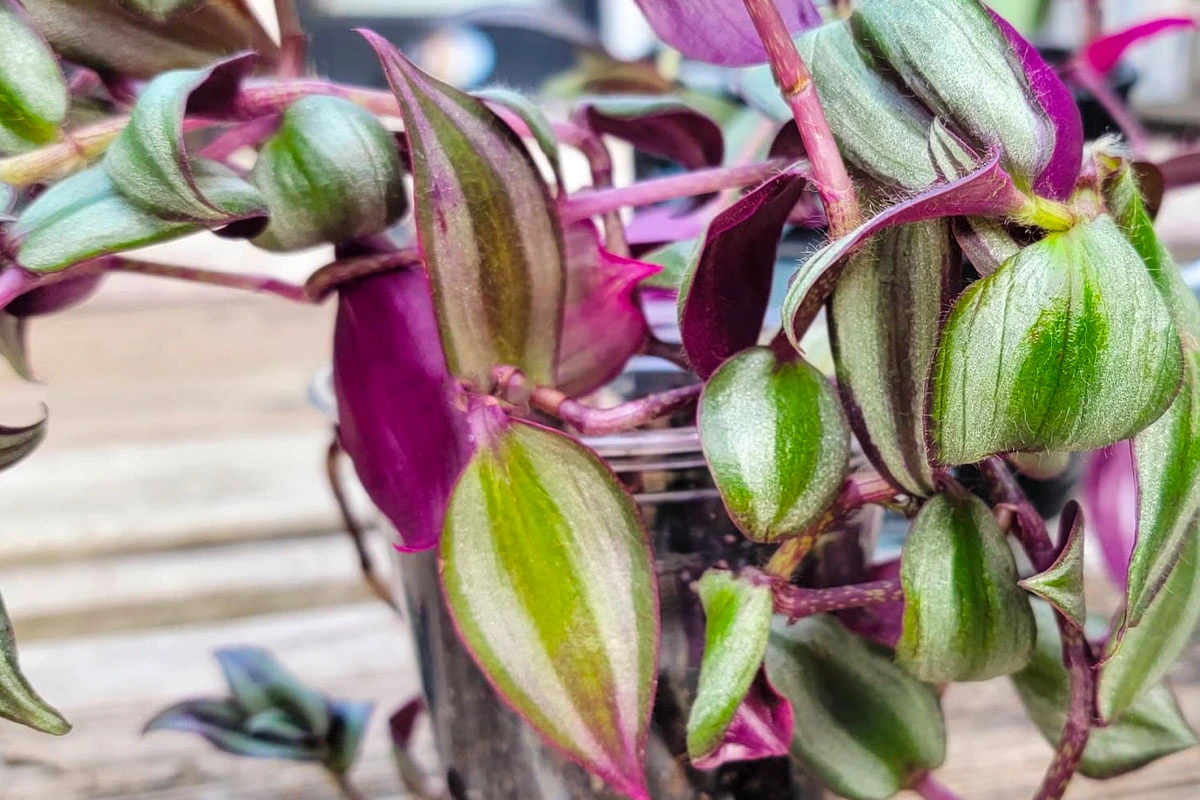
Troubleshooting Common Problems
Watch for these potential issues and take corrective action as needed:
Leaf Spot Diseases
Bacterial or fungal leaf spots cause unsightly marks. Improve air flow, prune affected leaves, avoid overhead watering and space plants out more.
Drooping or Wilting
This signals under-watering. Check soil moisture and water the plant thoroughly until it drains from the pot’s bottom. Resume watering when the top 1-2 inches become dry.
Intense direct sunlight, dry air, or over-fertilizing can cause brown crispy leaf margins. Adjust for more moderate light conditions, increase humidity and reduce fertilizer concentration or frequency.
Lower Leaves Turning Yellow
Natural aging causes lower leaves to yellow and drop over time. But overwatering issues can also cause yellowing leaves and leaf drop. Allow soil to dry more before waterings.
With its trailing vines and sensational rainbow leaf coloring, the Wandering Dude certainly earns its popularity as a houseplant! Give your Tradescantia zebrina plenty of bright indirect sunlight, average room temperatures and humidity, well-draining soil, and consistent moisture. Train it to climb or trail, fertilize monthly, and pinch back wayward vines for fabulous full growth. This colorful charmer thrives with a little attentive care!
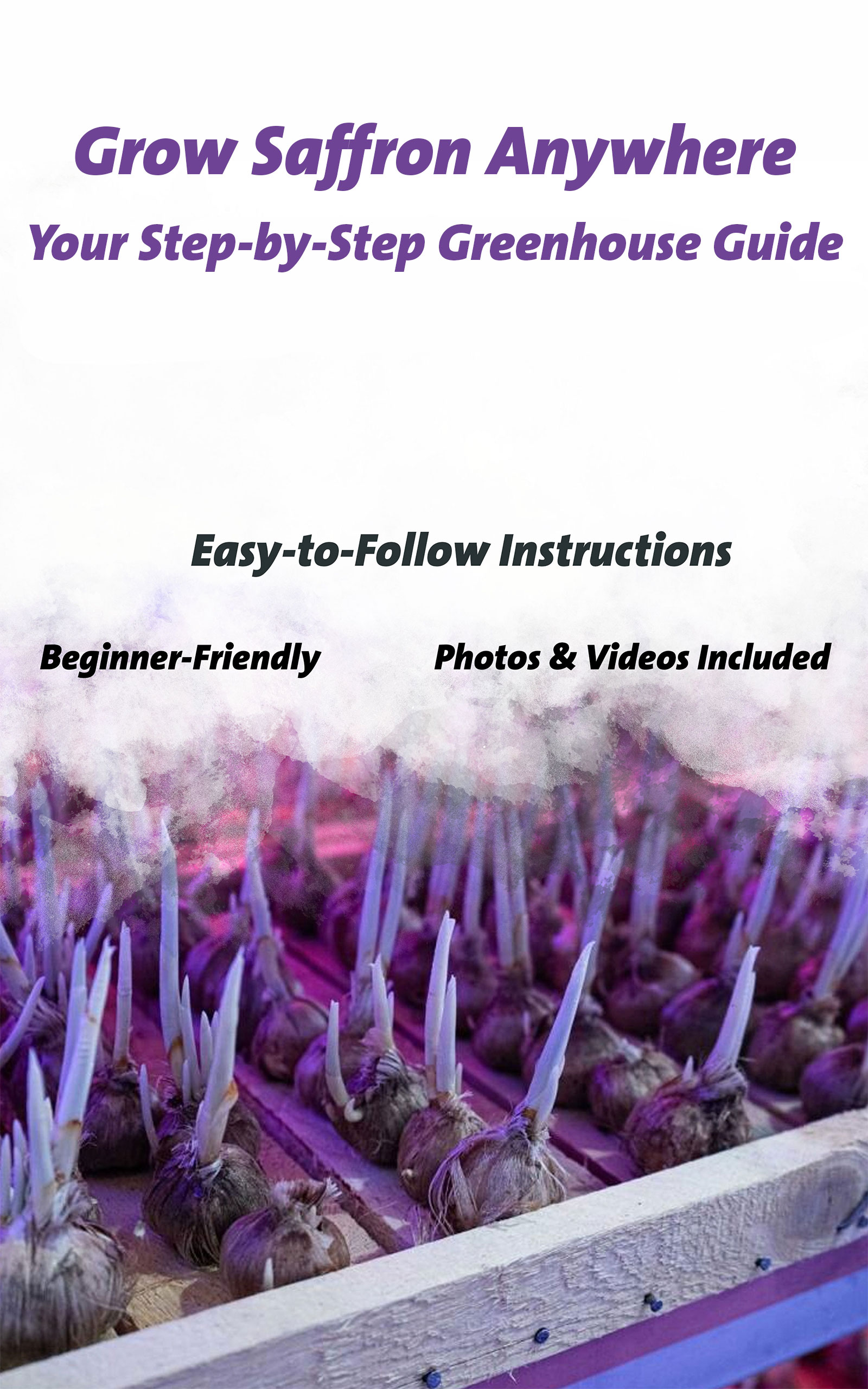
Ebook Training Saffron Planting In Greenhouse
Additional wandering dude plant care tips.
Here are some extra tips to ensure your Wandering dude houseplant reaches its full potential with vibrant trailing vines:
- Turn or rotate plants frequently for evenlydistributed growth on all sides rather than just growing towards the light source.
- Mist leaves occasionally with water to replicate the humidity of its native tropical habitat. Just don’t leave moisture sitting on leaves overnight.
- Remove dried out flower spikes promptly to encourage more energy redirected into leaf and vine growth.
- Wipe dust off plant leaves periodically with a damp cloth to keep their colors looking bold. Dust dulls the vibrant tones.
- Propagate new Tradescantia cuttings frequently. Younger smaller plants tend to show bolder color variegation on leaves.
- Don’t rush to repot into much larger containers. These plants like their roots somewhat confined. Upsize gradually in stages.
- Mix controlled release fertilizer beads into the potting soil to provide a steady low dose of nutrients over many months.
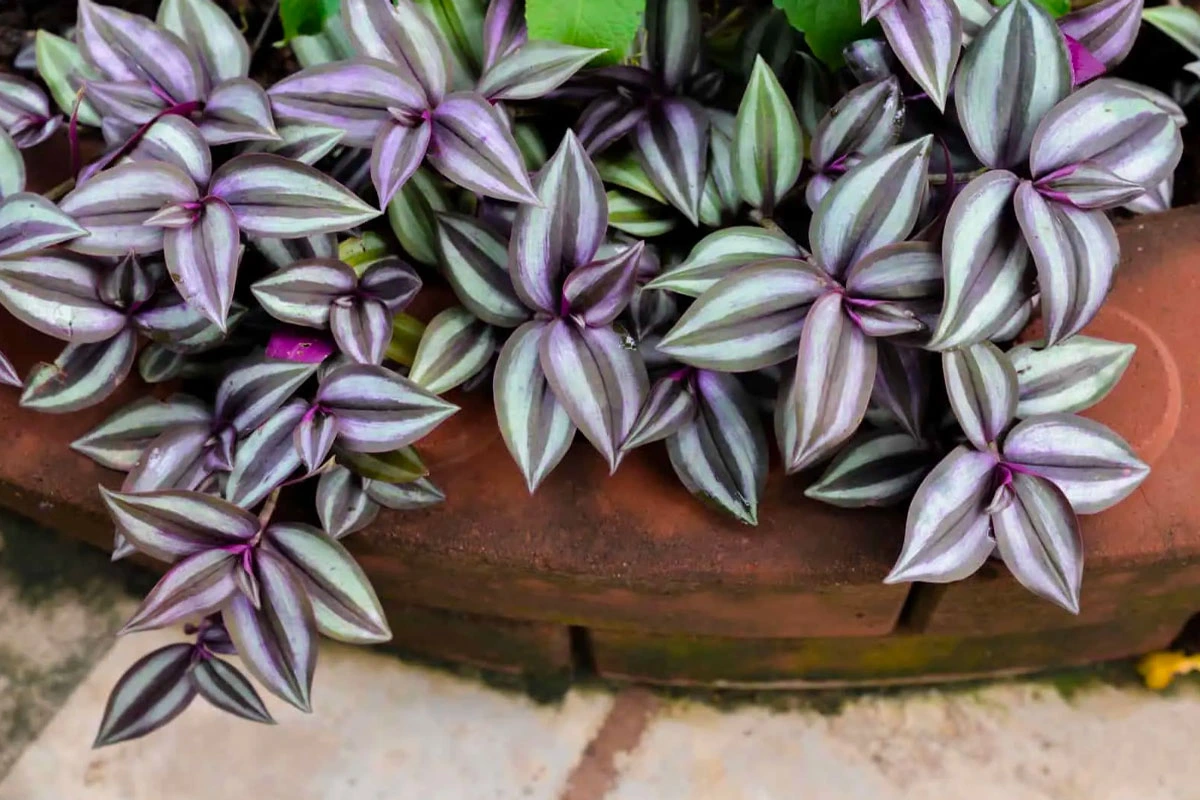
Troubleshooting Additional Issues
Q: Why is my Wandering dude plant developing long bare stems? A: Insufficient sunlight causes lanky, weak growth with bare lower stems. Provide much brighter filtered light or a few hours of direct morning/evening sun. Q: What causes leaf curling and wrinkling in Tradescantia? A: Underwatering causes leaves to wrinkle and curl under as the plant becomes dehydrated. Check soil moisture and water thoroughly when the top inch is dry. Q: How can I revive an overwatered Wandering Dude? A: Allow the soil to dry out completely between waterings. Trim off any rotted roots and repot in fresh well-draining soil. Withhold water again until the soil becomes mostly dry. Let me know if you have any other Wandering Jew or Wandering Dude plant care questions!
Frequently Asked Questions
How much light does the Wandering dude plant need? The Wandering Dude thrives in bright indirect light. Provide some morning or evening direct sun if possible, avoiding intense midday light. Insufficient light leads to weaker growth. What causes leggy growth in my Wandering dude houseplant? Leggy growth results from inadequate sunlight. Provide very bright indirect light or a few hours of direct sun for bushier, fuller growth. Prune stems and fertilize regularly as well. Why are the leaves on my Wandering Dude turning yellow? Lower leaves naturally yellow and drop off over time. But yellowing leaves higher up indicate overwatering issues. Allow the soil to dry out further between waterings to prevent yellowing. How do I encourage new growth in my Tradescantia? Fertilize monthly in spring and summer using a balanced liquid fertilizer to provide nutrients for new growth. Ensure adequate light levels and humidity. Prune back overgrown vines to stimulate new foliage. What are the best ways to use a Wandering Dude in my home decor? Let it trail freely from shelves and hanging baskets, or train vines onto trellises and totems. Position near other tropical looking plants. Allow it to cascade as a lush groundcover or accent piece.
Gruloda Team
Related articles.
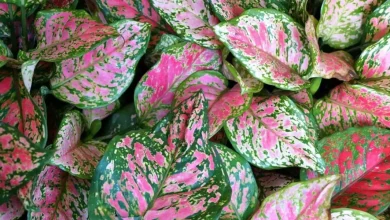
One Summer Mistake That Could Kill Your Aglaonema
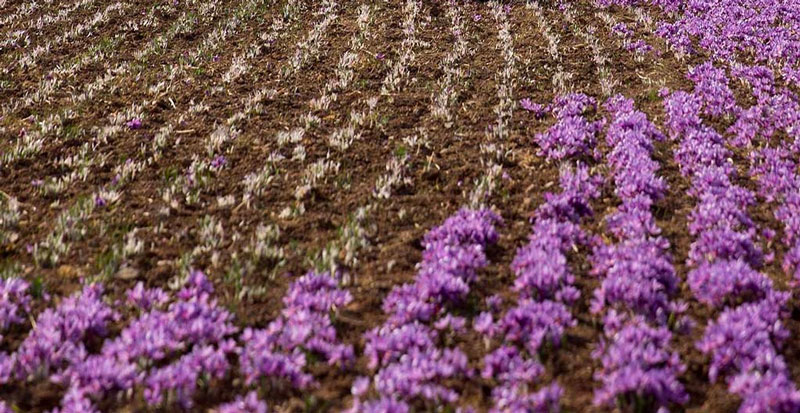
How to grow Saffron (Crocus Sativus) on a professional basis
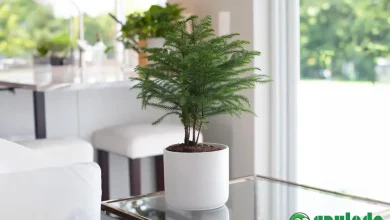
Norfolk Island Pine Care Guide

ZZ Plant Care Instructions – How to Care ZAMIOCULCAS ZAMIIFOLIA plant

Home » Houseplant care guides » How to Grow and Care for Tradescantia zebrina
How to Grow and Care for Tradescantia zebrina
- | Updated on: June 23, 2023
Tradescantia zebrina (formerly T. pendula ) goes by the names spiderwort, inch plant, silver inch plant, zebra plant, wandering dude, and the name epithet wandering Jew. Many people are moving away from this last name because it has negative and offensive connotations.
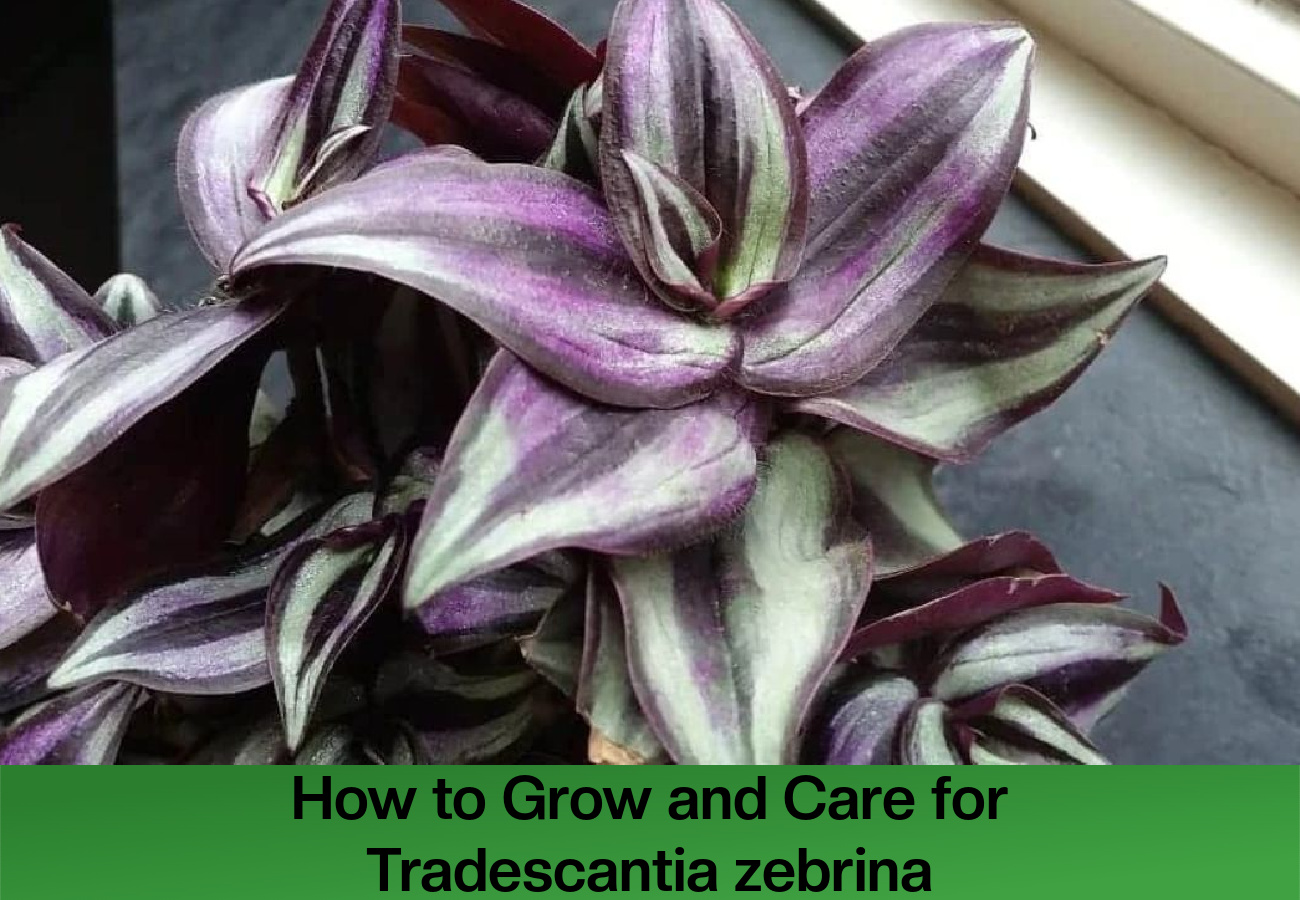
Native to warm, humid areas in Mexico, Columbia, and Guatemala, it has naturalized in hospitable areas in Asia and South America.
Inch plant grows to about a foot tall, with long, trailing stems. The succulent stems hold ovate or lanceolate leaves in green and purple with two silver stripes that appear to sparkle in direct light. On the underside, the leaves are solid magenta. The leaf margins are lined with fine hairs that help the plant trap water.
While the plant is capable of forming inconspicuous purple flowers, this rarely happens indoors.
Some houseplants look best grown as a specimen, but spiderworts are also a nice option as undergrowth for taller plants such as elephant ears ( Colocasia spp.) or canna lilies ( Canna spp.).
- Genus: Tradescantia
- Species: zebrina
- Indigenous To: Columbia, Guatemala, and Mexico
- Sun Exposure: Morning sun with bright indirect light the rest of the day
- Soil Preference: Well-draining loam or bark and moss
- Soil pH: 5.0-6.0
- Toxicity: Non-toxic, sap can cause contact dermatitis
- Growing Zones: 9-11
Caring for Tradescantia zebrina :
As a plant indigenous to warm, tropical regions, T. zebrina requires temperatures between 60-80°F to thrive. It can tolerate lower temperatures down to 45°F, but you run the risk of cold damage or stunting the plant. It can also tolerate warmer temperatures, up to 95°F, for brief periods.
These plants also do best in moderate to high humidity. Relative humidity between 40-90% is ideal. However, the plant will do fine in lower humidity, but it might develop brown leaf tips. If you’d like to increase the humidity around the plant, group it with other houseplants that need high humidity or use a humidifier in the room.
If you’d prefer not to use a humidifier, grow the plant in a bathroom or near a kitchen sink, which tends to have higher humidity than the rest of the home.
Some people opt to grow inch plants in terrariums or vivariums to give them the humidity they need and to contain their exuberant nature. They’re attractive when planted with strappy-leafed plants such as some bromeliads or birds nest ferns ( Aslenium nidus ) to create a contrast.
Wandering dudes can tolerate a range of light exposure. They can tolerate direct morning sun and will typically show better color with more light. However, they shouldn’t be exposed to harsh afternoon sun, or the leaves will become bleached and burned.
Without enough light, the leaves lose their distinct coloring and appear pale. The older, lower leaves will drop from the plant as well.
Try to aim for some direct sun in the morning with bright, indirect light in the afternoon. An east-facing window would be perfect. A west-facing or south-facing window covered in sheer curtains would also work. Place the plant within a few feet of the window.
Soil and Container
T. zebrina doesn’t need anything special when it comes to potting soil. Any water-retentive, well-draining potting soil fits the bill. Most of the mixes that you find on the market will work fine. Look for something with a combination of loam, moss, and perlite or vermiculite.
These plants aren’t fussy about container sizing, but the pot must have drainage.
Inch plants like moist soil but won’t tolerate standing water. Allow the soil to dry out between watering. Overeating leads to root rot.
Too little water results in leaves that turn brown and dry up. These may cling to the stem or fall.
If you don’t have a moisture meter that will indicate when the soil has become dry, you can use your finger as an indicator. Stick it into the soil up to your second knuckle. If it feels dry all the way to your second knuckle, add water. If you feel any moisture from the tip of your finger to your second knuckle, hold off.
When you water, be sure to empty any catchment container after about 30 minutes to reduce the risk of root rot.
There isn’t any need to feed your inch plants if you re-pot regularly. However, if the growth seems to be slow or stunted and there aren’t any pest or disease symptoms, feed the plant with a mild, balanced fertilizer.
Look for a water-soluble fertilizer with an NPK of 2-2-2 or 3-3-3. Feed the soil, not the leaves, once in the spring and again in the summer.
Overfeeding will cause the plant to lose its distinct coloring. With overfeeding, the leaves will look mostly green, with little silver or purple. Don’t feed unless you’re certain it’s necessary.
Maintenance
Pinch the plant regularly if you want to create bushier growth. Use a clean pair of scissors or clippers and trim back to a leaf node. You should also trim off leggy growth or any stems that are broken or discolored.
T. zebrina grows quickly and can become out of control before you realize what’s happening. If the plant outgrows its pot with roots circling the container, or growing out of the soil or drainage hole, increase to the next size up.
If you opt to move the plant outdoors in the summer, harden it off for a few weeks in order to gradually expose it to the harsher outdoor conditions.
Every few years, remove the plant from its container and replace all of the potting soil. This is necessary for several reasons. First, old soil tends to compact, contributing to root rot. Old soil also becomes hydrophobic over time, which means that it repels water. This makes it more difficult for the water to reach the roots rather than feeding straight out of the drainage holes.
Finally, old soil becomes depleted of nutrients and builds up with minerals if you use hard water.
When working with this plant, note that the mucilaginous sap can be irritating to the skin in some people. If you are prone to contact dermatitis, wear gloves when handling your spiderworts. The stems also break easily, so use caution not to snap them unintentionally.
Best Species and Cultivars
The world of the Tradescantia genus is a bit chaotic in terms of botanic nomenclature. Plants are constantly being mislabeled on the market. Many plants are labeled as zebrina cultivars when they actually belong to the chrysophylla, fluminensis, or albiflora species. That’s understandable since all of these species look similar to each other.
Here are a few of the true zebrina cultivars you can find on the market.
‘Burgundy’ has less green and more burgundy on the upper side of the leaves than the species.
Green Ghost
Slightly more subdued than the species, ‘Green Ghost’ lacks almost any purple on the top of the leaves and is primarily silver and green.
Violet Hill
Also known as ‘Purpusii,’ this cultivar has wider silver stripes and less purple than the species.
Propagation
Each node segment of the stem can produce an entirely new plant. This characteristic has led to the species becoming invasive in warm regions where it grows outdoors. As a houseplant, it’s a good thing because it means that we can readily reproduce it.
Cuttings can be propagated in soil or water. Look for a healthy stem and cut a section away that contains at least one leaf node. Place the cut end in water or in potting soil in a small container with good soil drainage.
Place the cutting in an area with bright but indirect light. Any direct light could burn the cuttings and should be avoided.
In a few weeks, new roots should develop. If you’re growing in water, you will be able to see the roots. Once they’re an inch long, you can plant the cutting into soil. Be sure to keep the soil moist as the cutting establishes itself. Water-grown cuttings take some time to adapt to soil and need extra moisture during the transition.
If you’re growing in soil, wait for new growth or gently tug the cutting to see if it resists. Once you have roots, you can either move the cutting into a larger pot or allow it to grow in the existing pot until it outgrows it.
In either case, once the plant has become established after a few months, you can move it into a sunnier growing spot and water less often.
Common Problems, Pests, and Diseases
This tough plant is rarely bothered by pests or diseases, particularly when you grow it indoors. Rarely, aphids (part of the superfamily Aphidoidea) will attack, causing yellow stippling or yellowing leaves. Examine your plant closely on the stem and underside of the leaves for these tiny tick relatives, which use their tiny sucking mouthparts to feed on the plant.
Isolate the plant while you treat it. Place the plant in a tub or sink and spray it with a blast of lukewarm water to displace the insects. You’ll need to repeat this every week for a month or so, but it’s a reliable method for eliminating these pests.
While they aren’t prone to disease problems, overwatering will smother the roots, depriving them of oxygen. If you consistently overwater, the plant will begin to wilt and turn brown. To remedy this physiological problem, remove the plant from its container and remove all the sodden soil.
Replace it with fresh potting soil after cleaning out the pot.
Watch out for root rot. This isn’t a disease but rather a physiological condition where the roots become deprived of oxygen because they’re drowning in too much water. Plants will root rot will look wilted and might have brown, mushy leaves.
If you notice these symptoms, dig down and look at the roots. If they’re brown or black and soft, remove the plant from the potting soil and dispose of the soil. Then, wash out the container, making sure the drainage hole isn’t clogged, and repot the plant with fresh soil. Reduce your watering and be sure only to water when the soil has dried out.
19 Unique and Uncommon Houseplants
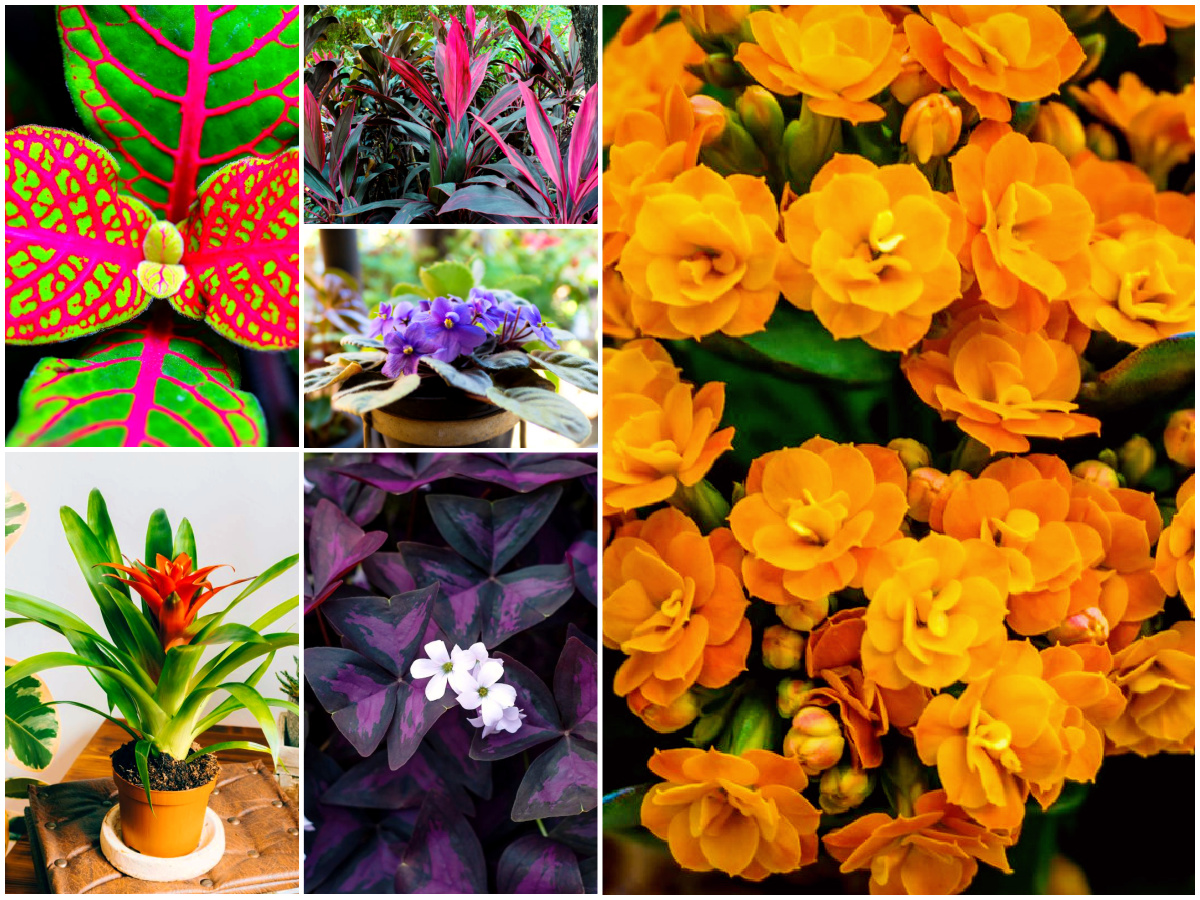
18 Most Colorful Houseplants to Brighten Your Space

16 Bright Indirect Light Houseplants

8 Ways to Clean Houseplants
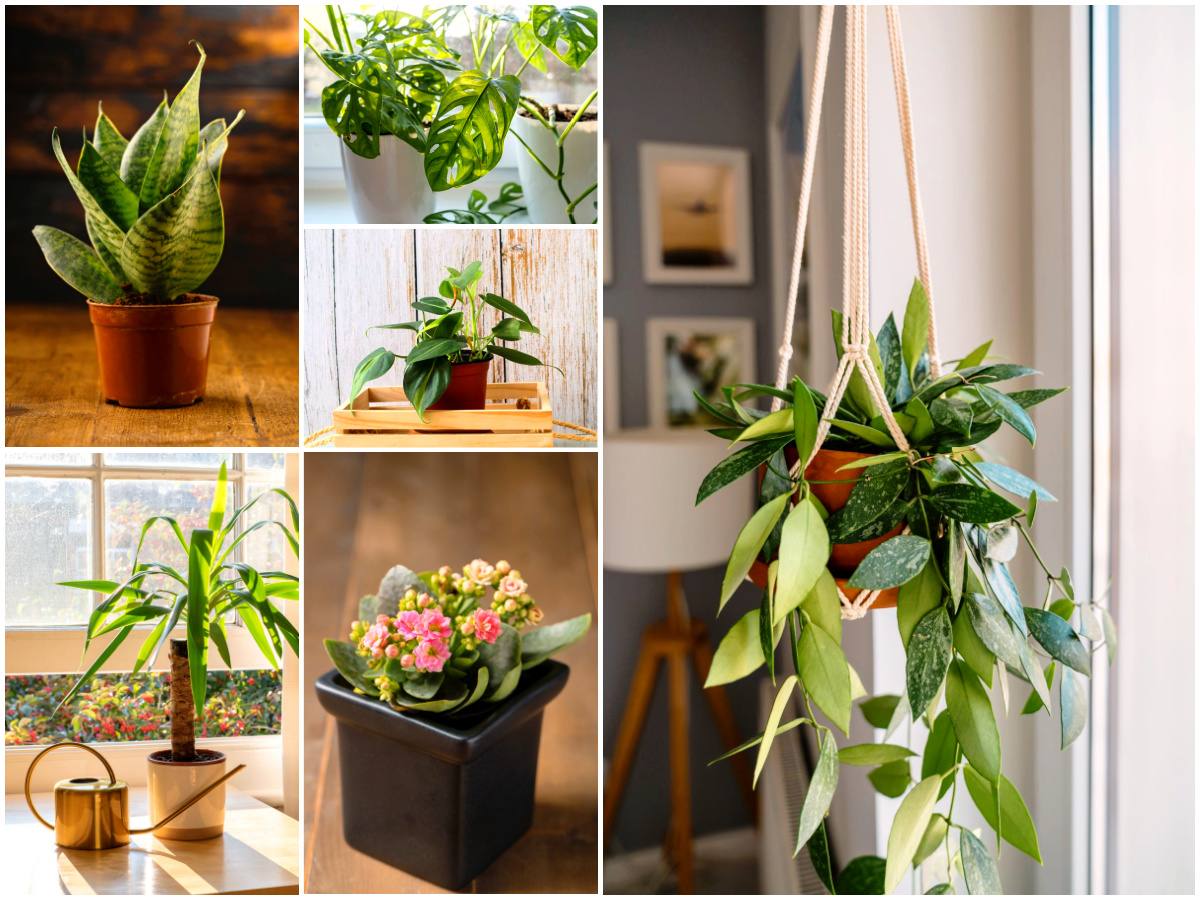
20 Hard to Kill Houseplants

- Indoor Gardening
- Houseplants
- Hydroponics
- Houseplants Made Easy Book

How To Care For A Wandering Jew Plant (Your Complete Guide)
When it comes to houseplants able to brighten up indoor spaces, it doesn’t get much more colorful than the variegated foliage of a Wandering Jew plant ( Tradescantia zebrina ). With their hardy nature and ease of care, they are a perfect choice for those feeling they kill everything they bring indoors. We’ve listed a quick summary of their care below.
How To Care For A Wandering Jew Plant: Grow your Wandering Jew in well-drained soil, kept moist but not soggy through regular watering. Create humidity, keep indoor temperatures between 50°F (10°C) to 85°F (29°C) and fertilize monthly.
Continue reading because we’ve taken all the guesswork out of caring for your Wandering Jew and keeping it healthy and happy for years to come.
How To Care For A Wandering Jew Plant
Wandering Jew plants belong in the Commelinaceae family, which includes around 652 different species. The family is made up of herbs, climbers and several epiphytes, with some used as outdoor and indoor ornamentals like Wandering Jew.
There are three different plants commonly known as Wandering Jews; Tradescantia fluminensis , Tradescantia pallida , and Tradescantia zebrina. Of the three, Tradescantia zebrina is the most common one grown and has the most eye-catching and colorful foliage. All three have the same requirements for care and good growth.
Native to Mexico and Guatemala, Wandering Jew is classified as a tender evergreen perennial that performs well planted outdoors in frost-free regions. Those living in cooler environments can easily grow it as an indoor plant planted either in containers or in hanging baskets. Outdoors it’s typically used as a quick-growing groundcover.
Although a common name shared with several very different plants, Wandering Jew is often called Inch Plant , due to the leaf margins being spaced about an inch apart. You may also find Wandering Jew listed as Zebrina Pendula , but is synonymous with Tradescantia zebrina and is the same plant.

When it comes to Wandering Jew plants, it’s all about the attention-grabbing foliage. The succulent stems give way to leaves that are a deep purple on their undersides with the upper portion striped in silvery-gray and greenish-blue. The oval leaves grow to about 2.5 inches long and the stems grow about 2 feet long. It makes a beautiful plant used in hanging baskets, with the long stems cascading over the side.
Even grown indoors, Wandering Jews have a fast rate of growth and before you know it, the plants will be spilling over your container’s or hanging basket’s sides. Whereas some indoor plants seem to take forever to fill out, this isn’t a problem with properly cared for Wandering Jew plants.
There are several other cultivars (varieties) of Wandering Jew, which include:
- ‘Purpusii’ has unstriped, hairy foliage that is either solid red or reddish-green.
- ‘Quadricolor’ produces metallic-green foliage striped in red, white and green.
Wandering Jew plants are the ideal candidates for beginner houseplant gardeners due to their hardiness and robust growth. Below we’ve outlined all the basics of their proper care, as well as identifying and preventing any potential problems so you can enjoy your Wandering Jew for years to come. The best indoor plants are those that are happy and healthy.

Soil Conditions For Wandering Jew Plants
Wandering Jew plants tolerate growing in a wide range of soils provided they drain well. Although they do tolerate and prefer moist conditions, the soil must drain properly to prevent root and stem rot from occurring. Therefore, it is necessary to use a lighter weight soil mixture in your pots rather than heavier soils that don’t provide proper drainage.
Straight potting soils are usually too heavy, retain too much moisture and have a tendency to leave the soil soggy. You can use a heavier potting soil in your soil mixture, just be sure to incorporate a lighter soil mix to provide the Wandering Jew the drainage required for healthy growth.
Commercial potting mixes work well and many have a slow-release fertilizer mixed in, which cuts down on the need for frequent feedings. The slow-release blends usually continue to fertilize the Wandering Jew for about three months.
You can also make your own soil by mixing several ingredients together such as:
- Using equal parts of compost and a potting mix.
- Mixing equal portions of compost, peat and potting soil or a potting mix.
- Using equal portions of a course sand, compost and potting soil or a potting mix.
Whatever soil you choose to use, just make sure it drains well and contains a bit of fertility for the best performance of your Wandering Jew plants.
Preferred Light Conditions
Although Wandering Jew plants tolerate lower light conditions than many houseplants, to help retain those striking colors the plant is known for, place the container in a location indoors receiving filtered sunlight. If your plant starts losing some of the color in the foliage, move it to a location that receives a bit more light.
In addition, if the lower portion of the stems start suffering leaf drop, the Wandering Jew isn’t get enough light and needs to be relocated to a brighter area inside the home.
Once the warm weather of spring arrives and if you’d like to give your Wandering Jew a bit of a break from its indoor location, place it in an outdoor spot that receives partial sun to partial shade. Moving it to an outdoor location with too much sun may leave the foliage sunburned.
Indoor Temperature Requirements
In the Wandering Jew’s native environment, temperatures are consistently warm without the threat of frosts or freezes. Generally, if the indoor temperatures inside your home are comfortable for you, they will also be comfortable for your Wandering Jew plant.
Indoor temperatures between 50°F (10°C) to 85°F (29°C) are a good range for your Wandering Jew plants. Plants grown in this temperature range produce the healthiest growth.
If you gave your plants a break from their indoor location, just make sure to bring them back indoors before the cold weather of winter strikes.
Water Requirements
Wandering Jews prefer soils that are regularly kept moist, not soggy, compared to many indoor houseplants. However, this doesn’t mean the soil should be kept so wet they never begin to dry out. Keeping the soil too wet for too long promotes rot to set in and you may end up killing your Wandering Jew plants. Your Wandering Jew is more likely to forgive you if you forget to water over watering too much and too often.
A good rule to follow is if the soil starts to feel like it’s about to become very dry, apply water. It’s easy to know exactly when to water by:
- Sticking your finger into the soil and if the top inch is starting to feel dry, water until it runs from the container’s bottom drain holes.
During the warm growing season of spring through summer, you can probably expect to water once each week. However, during winter when the Wandering Jew goes into dormancy (its growth slows), you will probably only need to water about every other week.

Humidity Requirements
Compared to many tropical plants grown indoors, Wandering Jew plants aren’t quite as fussy about humid conditions , but still need some humidity for the best growth and performance. Don’t let the thought of creating a humid environment stress you out because replicating humidity for your indoor plants is relatively easy and basic.
- Fill a spray bottle with room temperature water and mist the Wandering Jew several times each week.
- If you’re growing the Wandering Jew in a container and not in a hanging basket, you can set the pot on a tray of pebbles. As you water, the water seeps from the bottom drain holes onto the tray of pebbles and as it evaporates, it creates a humid environment around the plant.
- If your bathroom gets the appropriate amount of light for the Wandering Jew, you can allow it to grow there. Due to the regular use of water in a bathroom, moisture is created, creating the humidity the Wandering Jew requires.
Fertilizer Needs
Unless the soil mixture contains a slow-release fertilizer blend, which feeds the Wandering Jew for about three months, fertilizing monthly is sufficient for proper growth. You have several choices when it comes to fertilizer you can use for your Wandering Jew plant.
- Use a houseplant fertilizer applied at half-strength, applied when you do your regular watering.
- Use an all-purpose, water-soluble blend for outdoor and indoor plants, applied at half-strength and used during your regular watering schedule.
- If your soil mixture didn’t contain a slow-release fertilizer or it’s been about three months, if one was contained in the soil, you can reapply slow-release fertilizer granules sprinkled over the top of the soil. Follow the package directions on amounts.
When it comes to the appropriate time of year to fertilize the Wandering Jew, only fertilize while it’s actively growing, which is spring throughout summer. In winter, the plant goes through a dormant stage and all growth slows, so there is no need to apply fertilizer. Wait until spring arrives before you resume fertilizing the plant.
The one thing you will need to pay attention to when it comes to fertilizing is the buildup of salts in the soil, which can result in foliage burns. Wandering Jew plants have a low tolerance to salty soils. Preventing any salt buildup is relatively simple:
- If the plant isn’t too big, you can take the entire pot to your sink or bathtub and allow water to run slowly through the soil for about five minutes, flushing out any salts.
- If the plant is too big for indoor flushing, take it outside and allow water from the hose to run slowly through the soil for about five minutes. Allow the water to drain and then bring the plant back indoors.
Pruning Requirements
The pruning needs of Wandering Jew plants are low. If you want to control the size of the plant and promote bushier growth, you can pinch off the tips of the stems. To keep the plant always looking its best, you can trim off any broken, dead or damaged stems and leaves throughout the year.
When using pruning tools to trim your Wandering Jew always make sure they are clean so you don’t transfer any diseases or pests to your plant. This is as easy as wiping off the blades with alcohol.
Some people experience skin irritations when handling the cuttings due to the sap , so if you are unsure if you are one of these unlucky gardeners, it might be best to wear gardening gloves when pruning or handling Wandering Jew cuttings.
Potting Needs
If you purchased your Wandering Jew already potted in a hanging basket or 1-gallon container, it should thrive as is for a year or more before it requires repotting. However, if you received rooted cuttings in smaller containers like 4- to 6-inch pots, you most likely need to repot them into something a bit larger so they can grow properly.
This also cuts down on the need for repotting in a month or two as the Wandering Jew begins to outgrow its present pot.
When it comes to the pot’s material, any type works quite well for growing this plant from clay to plastic. However, if you grow your Wandering Jew in a pot made of a porous material like terra cotta, the soil is going to dry quicker than if it was growing in a plastic pot. This means you will need to water more frequently.
Once your Wandering Jew starts getting too big for its present container, it’s time to repot it into one that is around 1- to 2-inches larger. Although the plant likes a moist soil, make sure the pot has bottom drainage to prevent the possibility of rot due to conditions that are too wet.
If you like, you can dress the container up by placing the draining one inside a decorative pot without bottom drain holes, but be sure to empty out any additional water once the inner pot thoroughly drains.
I think a decorative outer pot can add so much to the beauty of your houseplants, so I do this with almost all of my houseplants. Read this article which discusses my favorite decorative planters if you need some inspiration.
Potting and repotting your Wandering Jew is basic:
- Gently remove the Wandering Jew from its present container, being careful not to break the succulent stems.
- Fill the new container that drains about a quarter of the way full with a fertile, well-drained potting mix.
- Check the Wandering Jew’s root system and if it’s growing bunched together and filled the previous pot, gently tease the roots apart with your hands.
- Place the Wandering Jew into the new container and finish filling it with soil.
- Water the Wandering Jew until it runs from the bottom drain holes and place in a bright location indoors.

Propagating New Plants
When it comes to propagating new plants, Wandering Jew is about as easy as it gets. Even if you have never done this before you should have success starting its cuttings. When you trim to control its size, don’t throw those cuttings away but use them to start additional plants.
You have two choices when it comes to rooting your cuttings and both are easy. The first thing you will want to do is obtain your cuttings. Trim off a 4- to 6-inch cutting from the mother plant and you’re ready to start rooting.
Rooting in Soil
- Fill a 6-inch to 1-gallon container that drains with a rich, well-drained potting mix. Water the soil to settle it.
- Make about a 2-inch indentation in the soil where you want to place the Wandering Jew cutting.
- Remove the bottom leaves from the cutting where you will be inserting it into the soil. You can do this by pinching them off with your fingers.
- Place the cutting into the indentation and firm the soil up around it with your fingers.
- Water the soil again and place the cutting in the same light conditions where the mother plant was thriving. Keep the soil moist but not soggy.
Roots should form in about four weeks and after about eight weeks, the Wandering Jew cuttings should form a new root system.
Rooting in Water
- Fill a glass jar or plastic container with about 3-inches of room temperature water.
- Pinch off any leaves from the section of the Wandering Jew cutting that will be submerged in the water.
- Place the cutting in the water and situate the container in a bright indoor location.
- Change the water in the container about every other week, or when cloudy.
You should start seeing new roots form on the cuttings in several weeks. Once the roots are several inches long, you can repot the cuttings into a draining container filled with fertile, well-drained soil.
Disease Problems
Wandering Jew plants grown indoors are hardy and don’t have major diseases that plague them. However, rot is their biggest enemy and caused by soils that are too heavy and do not drain properly, retaining too much water. Overwatering and planting in pots that don’t drain are other causes of rot problems.
When rot rears its ugly head you’ll notice the bottom stems, as well as the foliage turning black, becoming mushy and the entire plant collapses. If this happens and seems to start affecting the entire Wandering Jew plant, you can trim off healthy, unaffected sections of the stems and repot into fresh, clean soil. Since there is no saving the rot-infected sections, you will have no choice but to discard those portions of the plant.
Steps for preventing problems with rot include:
- Using lightweight potting mixes that drain well and aren’t too heavy, which leads to the soil remaining too wet for too long. Some types of potting soils have a tendency to be heavy and need mixing with a potting mix, compost, coarse sand or peat.
- Don’t overwater your Wandering Jew. Although they prefer growing in moist soils, this doesn’t mean constantly soggy soil. Stick your finger into the soil and if the top inch is starting to become dry, apply water until it runs from the bottom of the pot.
- Make sure the pot you are growing your Wandering Jew in has bottom drainage. If you have placed the pot inside a decorative one that doesn’t drain, make sure to empty all the water from it after you have watered.
Pest Problems
Although indoor Wandering Jew plants are not big candidates for problems with pests, several can cause an infestation and problems. As with any pest problem indoors or outside in the garden, quick control is always the best option to keep your plants healthy. It also assures the pests do not migrate to your other plants causing even bigger problems and headaches.
The pests most likely to infest your indoor Wandering Jew plants are:
- Aphids: Aphids come in a host of different colors and are tiny, pear-shaped, sap-sucking insects that usually congregate in large masses along the Wandering Jew’s stems. In large infestations, they can kill the plant or severely weaken it. If the infestation is small, you can wipe the pests off the stems with a moist cloth. However, if the infestation is large, you will probably have to spray the plant with an insecticidal soap or Neem, reapplying as suggested on the package.
- Spider Mites: Spider mites are another sap-sucking pest that if left unchecked can quickly kill or weaken the Wandering Jew. It is easy to tell if you have a spider mite problem as these tiny, white pests spin fine webbing that covers the plant. Spider mites can be the bane of houseplants so quick control is necessary. Use an insecticidal soap or Neem and spray the entire plant, reapplying as suggested on the product label.
- Whiteflies: Whiteflies are other sap-sucking pests that can quickly kill or weaken your Wandering Jew if not quickly controlled. They are another easily identifiable pest, as just touching the plant sends the tiny whiteflies from the plant’s foliage and into the air, hovering right above it. Control the problem with an insecticidal soap or Neem, spraying the entire plant and reapplying as suggested on the product’s label.
- Mealybugs: Sap-sucking mealybugs show up on the Wandering Jew as cottony masses covering the stems and crotches of the foliage. Control the problem by spraying the entire plant with insecticidal soap or Neem, reapplying as suggested on the product’s label. If the infestation is small, you can also wipe them from the stems and leaves with a damp cloth.

Is Wandering Jew A Perennial?
Wandering Jew plants are considered a tender, evergreen perennial. Unlike annuals, and if grown in preferred conditions with proper care, Wandering Jews should live and keep on growing for quite a few years, both indoors and outside.
Why Are My Wandering Jew Plant’s Leaves Losing Their Color?
If your Wandering Jew is growing in light conditions that are too low, the leaves will start to lose their color and become duller. When grown indoors and to keep the bright color on the foliage, make sure the Wandering Jew is growing in a location receiving bright light.
Why Are My Wandering Jew’s Leaves Dropping?
Wandering Jew plants grown in light conditions that are too low will start dropping leaves at the base of their stems. Solve the problem by moving the plant to an indoor location that is brighter. For the best leaf color and growth, they prefer an indoor location receiving bright light.
Why Are My Wandering Jew Cuttings Rotting In Soil?
If your Wandering Jew cuttings are rotting in soil it could be one of two things causing the problem. The soil you are growing the cuttings in may be infected with a fungus that is infecting them with rot.
You can solve the problem by planting the cutting in a sterile, well-drained potting mix. Another cause might be the soil is remaining too soggy and the container doesn’t drain.
Make sure you are using a soil that drains well and doesn’t remain soggy, do not overwater and use a container with bottom drainage. Water the cuttings when to top inch of soil feels dry to the touch.
Can I Root Wandering Jew Cuttings In Water?
Wandering Jew cuttings root quite well in water. Fill a container with several inches of water, remove any leaves that would be submerged and stick the cut end into the water.
Fill the container with fresh, clean water about every other week. You should start seeing root form on the cuttings in several weeks. Once the roots get several inches in length, you can repot the cuttings in a draining container with rich, well-drained soil.
Are Wandering Jew Plants Toxic?
When it comes to humans, Wandering Jew’s sap can cause skin irritation in humans that are allergic to it. Therefore, it’s best to wear gardening gloves when handling or pruning the plant.
The plant is listed as toxic to dogs and cats, due to its tendency to cause skin allergies and dermatitis. To keep your pets and children safe, make sure you situate your indoor Wandering Jew out of the reach of both.
If you’d like some indoor plants that are non-toxic, check out this article which discusses my favorite non-toxic houseplants.
Do Wandering Jew Plants Produce Blooms?
When grown outdoors, Wandering Jews produce small, three-petaled, lavender flowers, but the plant rarely ever blooms grown indoors as a houseplant.
Can I Grow Wandering Jew Outdoors?
Wandering Jew plants grow as perennials planted outdoors in frost-free climates, however, those with cooler weather can plant outdoors and treat it as an annual.
What’s The Growth Rate For Wandering Jew Plants?
When grown in proper conditions with proper care, Wandering Jew plants are considered fast growers.
Many thanks for reading my guide to Wandering Jew care. This really is a great indoor plant for your home. Beautiful and easy to care for, its hard to go wrong.
If you want more help with looking after your indoor plants, check out the rest of my articles , and head over to my resources section , where I have some great recommended resources, books and equipment to help you grow healthier, more beautiful plants.

Wandering Jew (Tradescantia zebrina): Plant Care and Growing Guide – House Plants Expert

Table of Contents
The Wandering Jew plant is the common name given to a number of plants from the Tradescantia genus, including the scientific name Tradescantia Fluminensis, Tradescantia Pallida, and the most popular one – Tradescanita Zabrina.
The common name of “The Wandering Jew” is believed to come from a legend that the wandering jew ‘taunted Jesus’ en route to being crucified and was cursed to walk the Earth until the second coming. This can be viewed as antisemitic to some so be sensitive to that. We love our plants and certainly do not mean to offend when using their common name. Many have started now to use the common name wandering dudes or dude plant.
Some countries classify this species as an invasive plant or even a weed. This is because of its growth habit (it grows fast and prevents the growth of other plants). However, grown indoors it makes an attractive hanging basket or windowsill plant.
The purple wandering jew or purple heart is one of my favorite plants. The foliage is fleshy, has violet leaf colors, easy to care for, has simple propagation, and is just an overall nice houseplant to have in your collection.
Description
There are a number of tradescantia plants very similar in looks, how they’re grown and their growth habit, including the T. zebrina (which has dark green leaves with silver bands), the Tradescantia Fluminensis variegata with cream stripes, and quicksilver which has white stripes. Then there’s the T. Pallida from the same genus which is sometimes named Wandering Jew plant but looks very different from the Tradescantia Fluminensis and Zebrina.
Foliage
Fleshy oval or lance-shaped leaves are produced from the pendant stems (growing a couple of feet or so long). These small leaves have a shiny appearance and grow to about 2 – 4 inches long with pointed tips. The underside of a leaf is purple in color on the zebrina and new leaves appear purple at first, then turn green. In the wild or grown in gardens (grown as a bedding plant) stems take root at the nodes, but indoors in a hanging basket or container they grow and hang over the sides.
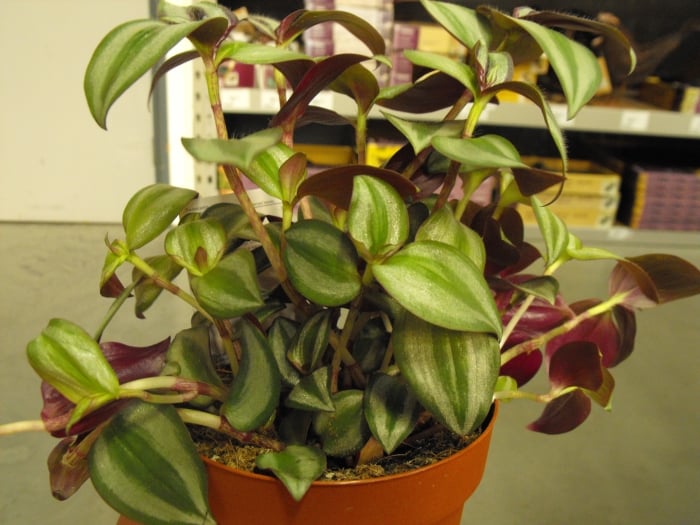
Flowering
The small non-showy flowers are white in color, appearing during summer usually and at other times (depending on the conditions). These flowers appear in clusters and display three small petals.
Plant Care and Growing
Wandering jew plants are pretty simple to care for and maintain, although providing plenty of bright light is important. Tradescantia naturally becomes spindly and needs to be pruned regularly and pinching stems will encourage fuller growth, improving its appearance.
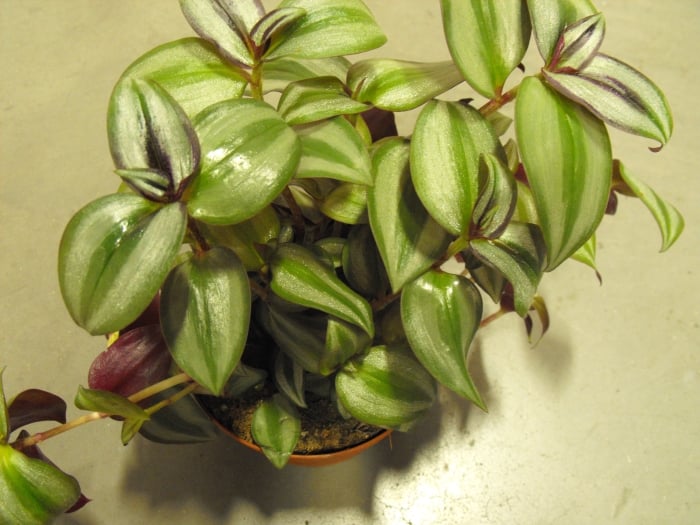
Potential Problems
- Spindly growth and bare stems: This happens naturally with age for this plant but lack of light, water, or plant food can also cause spindly growth. If the plant is old and conditions are fine (water, light, etc.) then it could be time to replace it.
- All green leaves: Variegated leaves turning green and losing their variegation is most likely due to too much light.
- Limp stems: Limp stems are usually a sign that the plant is lacking water
Take a 3 to 5-inch softwood cutting and place it in a moist potting mixture or water. Wait three weeks and enjoy.
Yes, the wandering jew can live in water indefinitely given nutrients and frequent water changes.
Yes, it is toxic but not fatal to cats, dogs, and horses. The leaves contain calcium oxalate crystals which is the toxic component.
The answer is it can be planted inside or out and is even considered a noxious weed in some areas as it grows so well.
Water often to keep the soil moist but not soaked.
Was this helpful?

Elyssa Goins is an experienced house plant hobbyist who maintains over a hundred plants. She is a gardener, beekeeper, and a proud mother of four. She is a member of the American Horticultural Society, has a published study in the National Social Science Association , and loves to talk about her love of plants. For the past twenty years, she’s been all about growing and caring for various fruits, veggies, herbs, livestock, kids, and houseplants. Managing a big garden to feed four growing kids and raising dairy goats has taught her so much about being an excellent plant parent and now is her time to share with you.
Dumb Cane Plant (Dieffenbachia): Plant Care and Growing Guide – House Plants Expert
Monstera albo (monstera deliciosa): plant care and growing guide – house plants expert.
This site uses Akismet to reduce spam. Learn how your comment data is processed .
Hi Mary, I hope you are able settle an argument between my brother & I He claims that golden canes are a grass spieces & not a tree!! Thank you in anticipation James

Oh boy, this feels like a setup. Golden Canes are a monocots which is in the same primary class as grass. What is the definition of a tree? If your hammock is tied to a tree on a tropical island would you call it grass? The technical and practical definitions are not the same for this age old debate.
- Privacy Policy
Copyright © 2013-2024 · Houseplantsexpert.com Houseplantsexpert.com is a participant in the Amazon Services LLC Associates Program, an affiliate advertising program designed to provide a means for sites to earn advertising fees by advertising and linking to Amazon.com.*Amazon and the Amazon logo are trademarks of Amazon.com, Inc., or its affiliates. Additionally, Houseplantsexpert.com participates in various other affiliate programs, and we sometimes get a commission through purchases made through our links.
Guide to Growing Wandering Dude Plant in a Pot
Wandering dude, also known as Tradescantia zebrina, is a popular indoor plant due to its vibrant foliage and easy care. It is commonly grown in hanging baskets or as a ground cover, but it can also be grown in a pot. In this guide, we will go over everything you need to know about growing wandering dude plant in a pot.
Choosing the Right Pot
The first step in growing wandering dude in a pot is to choose the right container. The pot should have drainage holes to prevent water from pooling at the bottom and causing root rot. The size of the pot should be proportional to the size of the plant. If the pot is too small, the roots will become cramped and hinder growth. If the pot is too large, it can lead to overwatering and root rot.
Soil Requirements
Wandering dude plants prefer well-draining soil that is rich in organic matter. A good potting mix for wandering dude should consist of equal parts peat moss, perlite, and vermiculite. You can also add some compost or worm castings for added nutrients. Avoid using heavy soil or garden soil as they can retain too much moisture and cause root rot.
One of the most important things to keep in mind when growing wandering dude in a pot is watering. Overwatering can lead to root rot while under-watering can cause the leaves to wilt and drop off. The best way to water wandering dude is to wait until the top inch of soil is dry before watering again. When watering, make sure to water thoroughly until water comes out of the drainage holes.
Wandering dude plants require bright, indirect light to thrive. They can tolerate some direct sunlight, but too much can scorch the leaves. Place your wandering dude plant near a window that receives bright but filtered light. You can also supplement with artificial light if necessary.
Fertilizing
Wandering dude plants benefit from regular fertilization during the growing season (spring and summer). Use a balanced, water-soluble fertilizer every 2-3 weeks to promote healthy growth and vibrant foliage. Avoid fertilizing during the winter when the plant is dormant.
Propagation
Wandering dude plants are easy to propagate through stem cuttings. Simply take a 4-6 inch cutting from the tip of a healthy stem and remove the lower leaves. Dip the cut end in rooting hormone and plant it in moist potting soil. Keep the soil moist and the cutting in bright, indirect light until roots have formed.
Pests and Diseases
Wandering dude plants are relatively pest and disease-free, but they can be susceptible to spider mites, mealybugs, and scale insects. Look out for signs of infestation such as yellowing leaves, sticky residue, or webbing. Treat infestations with neem oil or insecticidal soap.
Q: Is wandering dude plant toxic to pets?
A: Yes, wandering dude can be toxic to pets if ingested. Keep it out of reach of pets or choose a different plant if you have pets that like to nibble on plants.
Q: Can wandering dude be grown outdoors?
A: Yes, wandering dude can be grown outdoors in USDA hardiness zones 9-11. It prefers partial shade and well-draining soil.
Q: Why are my wandering dude’s leaves turning brown?
A: Brown leaves on wandering dude can be a sign of overwatering, underwatering, or too much direct sunlight. Adjust your watering schedule or move the plant to a shadier location if necessary.
Q: Can I grow wandering dude in a terrarium?
A: Yes, wandering dude can be grown in a terrarium as long as it receives bright, indirect light and the humidity levels are not too high.
In conclusion, growing wandering dude in a pot is easy and rewarding. With the right pot, soil, lighting, watering, and fertilizing, your wandering dude plant will thrive and add a touch of vibrancy to your indoor space.
About the Author
Related posts.
Here are some more posts from the " Wandering Dude Plant " category that you may enjoy.
- How to Grow Wandering Dude Plant Outdoors
- Is Wandering Dude Plant Safe for My Pets?
- Wandering Dude Plant Size: Get the Right Size for You
- How to Repot Wandering Dude Plant
- How to Get Rid of Scales on Wandering Dude Plant
- What Are the Different Types of Wandering Dude Plant
- How to Grow Wandering Dude Plant Indoors
- How to Get Rid of Gnats in Wandering Dude Plant
- What Causes Wandering Dude Plant Leaves to Curl?
- What is Wandering Dude Plant Commonly Used For?
Home To Heather
Inch Plant – Tradescantia Zebrina
Back to the House Plant Index

Wandering Dude or Tradescantia is the perfect beginner plant. It’s going to be forgiving if you miss a watering – or even if you over water a little. It’s going to be forgiving if it’s not in the perfect light conditions and more than being forgiving – it’s going to grow! Mine has grown by leaps and bounds and while it is still planted in the bowl shown above, it’s ready for a larger pot. You can see in the other photos just how large it has gotten!
Tradescantia is also fun because it flowers! Flowers will grow over and over on the flower stalks so don’t trim them off if you’re taking cuttings for propagation, which by the way, you should do as it propagates very easily in both water and soil.

General Wandering Dude Tradescantia Care Tips
Light: Inch Plant (also known as Wandering Jew, but mostly being called ‘Wandering Dude’ these days and rightly so) is pretty flexible in the light it can handle. If you put it in very bright light the whole plant will turn purple. If you put it in less intense light, you will see more of the variegation or stripe on the leaf. I tend to place mine in bright, indirect light as that will encourage a bushy plant with less ‘legginess.’
Water: Tap water is just fine for this plant and I let it dry out thoroughly between watering. As it is currently in a small bowl with no drainage I likely go a little scant on water. As long as you aren’t leaving it to sit in a puddle, it’s going to be happy.
Soil: I use a standard, well draining potting mix that includes perlite.
Humidity: This plant is in standard room humidity and doing well.
Fertilizer: I am using a general 10-10-10 water soluble plant fertilizer once a month.
Pruning: You should prune this plant readily to encourage bushy growth. Put cuttings right back into the pot and they will root and grow.
Toxicity: Listed as toxic to cats and dogs. See this article for 20 plants safe for cats.

See what the flower stalks look like below. If you’re shopping for a new plant in the nursery, look for one that already has flower stalks.

There are many varieties of Tradescantia and the Zebrina is a great place to start exploring the genus. I think it’s the ideal place to start with houseplants too as they’re so easy and provide much to learn. Plus, they’re very inexpensive so get a little baby and watch it grow!
Leave a Reply Cancel reply
Your email address will not be published. Required fields are marked *
Privacy Overview
Wandering 'Dude'
Tradescantia zebrina.

- List of Plants (A to Z)
- Buy Plant Seeds Online
- How to Save a Dying Wandering Dude Plant
If you have a wandering dude plant (also known as Tradescantia zebrina) that is looking a bit sad and wilted, don’t panic! There are several steps you can take to save your plant and bring it back to its former glory. This article will guide you through the process of reviving a dying wandering dude plant.
Assess the Situation
The first step in saving your dying wandering dude plant is to assess the situation and determine the cause of its decline. There are several factors that could be contributing to its poor health, such as underwatering, overwatering, lack of sunlight, or pests. By identifying the problem, you can take appropriate action to address it.
One of the most common reasons for a wandering dude plant to wilt is improper watering. If you notice that the leaves are drooping or turning yellow, it may be a sign that your plant is not receiving enough water. On the other hand, if the leaves are mushy or brown at the tips, overwatering may be the culprit.
To save your wandering dude plant, adjust your watering routine accordingly. If underwatering is the issue, make sure to water your plant thoroughly until water drains out from the bottom of the pot. On the other hand, if overwatering is the problem, allow the soil to dry out before watering again. It’s important to strike a balance and provide your plant with consistent moisture without letting it sit in waterlogged soil.
Wandering dude plants thrive in bright, indirect light. Insufficient light can cause them to become weak and leggy, while too much direct sunlight can scorch their leaves. If you notice that your plant is not growing well or its leaves are losing their vibrant color, it may be a sign that it needs more or less light.
To save your wandering dude plant, find a suitable location with bright, indirect light. This could be near a window with a sheer curtain, or a few feet away from a bright artificial light source. If your plant has been receiving too much direct sunlight, move it to a shadier spot to prevent leaf burn.
If your wandering dude plant is looking wilted and sad, it may benefit from some pruning. Trimming off dead or yellowing leaves can improve the overall appearance of the plant and encourage new growth. Additionally, pruning can help redirect the plant’s energy towards healthier parts, aiding in its recovery.
To prune your wandering dude plant, use clean and sharp scissors or pruning shears. Cut off any dead or yellowing leaves at the base of the stem. You can also trim back long and leggy stems to promote bushier growth. Be sure to disinfect your tools before and after use to prevent the spread of any potential diseases.
Pests such as spider mites, aphids, and mealybugs can wreak havoc on your wandering dude plant, causing it to decline rapidly. If you notice small webs, tiny insects, or sticky residue on the leaves, it’s likely that your plant has been infested.
To save your wandering dude plant from pests, start by isolating it from other plants to prevent the infestation from spreading. Next, gently wipe down the leaves with a damp cloth to remove any visible pests. For more severe infestations, you may need to use an organic insecticidal soap or neem oil spray to eliminate the pests. Remember to follow the instructions on the product carefully and repeat the treatment if necessary.
Soil and Fertilizer
The right soil mix and proper fertilization can greatly contribute to the health and vitality of your wandering dude plant. These plants prefer well-draining soil that retains moisture without becoming waterlogged. A mix of potting soil, perlite, and peat moss can provide the ideal growing conditions.
When it comes to fertilization, use a balanced houseplant fertilizer diluted to half strength. Feed your wandering dude plant once a month during the growing season (spring and summer) and reduce or stop fertilizing during the dormant period (fall and winter).
Patience and Care
Saving a dying wandering dude plant requires patience and consistent care. Keep an eye on your plant’s progress and make adjustments as needed. Remember to rotate your plant occasionally to ensure even growth, mist the leaves to increase humidity, and avoid placing it near drafts or heating vents.
In conclusion, with the right care and attention, you can save a dying wandering dude plant and bring it back to life. By assessing the situation, adjusting watering and lighting, pruning when necessary, addressing pest issues, providing suitable soil and fertilization, and practicing patience and care, you can revive your plant and enjoy its lush green foliage once again. Happy gardening!
Related Posts:
Wandering dude plant.
- Where to Place Wandering Dude Plant for Perfect Feng Shui
- How Much Water Does Wandering Dude Plant Watering
- How to Prevent Wandering Dude Plant from Rotting
- How to Grow Wandering Dude Plant Outdoors
- How to Get Rid of Ants on Wandering Dude Plant
- How Quickly Does Wandering Dude Plant Grow?
- How to Get Rid of Slugs on Wandering Dude Plant
- Wandering Dude Plant Size: Get the Right Size for You
- How to Get Rid of Scales on Wandering Dude Plant
- Common Wandering Dude Plant Diseases: How to Identify and Treat
- Most Common Wandering Dude Plant Pests: Identification and Treatment Guide
- How to Get Rid of Snails on Wandering Dude Plant
- Wandering Dude Plant Harvesting: Optimal Time and Technique
- What Are the Different Types of Wandering Dude Plant
- Guide to Fertilizing Your Wandering Dude Plant
- How to Get Rid of Slaters on Wandering Dude Plant
- How to Get Rid of Mosquito Larvae in Wandering Dude Plant Water
- What is Wandering Dude Plant Commonly Used For?
- How Deep Does Wandering Dude Plant Need to Be Planted?
- How Much Oxygen Does Wandering Dude Plant Produce?
- What Causes Wandering Dude Plant Leaves to Curl?
- Is Wandering Dude Plant Safe for My Pets?
- Use a Hanging Wandering Dude Plant to Freshen up Your Space
- Why Is My Wandering Dude Plant Falling Over
- Why is My Wandering Dude Plant Drooping
- How to Grow Wandering Dude Plant Indoors
- Wandering Dude Plant Soil: How to Choose the Right Type
- How to Tell if Wandering Dude Plant Needs Watering?
- How to Pollinate Wandering Dude Plant: Increase Your Yield
- Wandering Dude Plant Seeds: Guide to Storing, Sowing and Germination

IMAGES
VIDEO
COMMENTS
Learn how to grow and care for wandering dude plants, also known as wandering jew or inch plant. Find out the different varieties, light, water, soil, fertilizer, and pest and disease issues.
The wandering dude is a novice plant parent's dream: It's an easy to grow plant, has beautiful silver, green and magenta foliage, and drapes beautifully from pots.Wandering dude (Tradescantia zebrina) also is super-simple to propagate so you can make more baby plants (for free!).With its long dangling stems, this plant tends to "wander" all over the place.
Learn how to grow and care for Tradescantia zebrina, a type of spiderwort with purple- and silver-striped foliage. Find out about watering, fertilizing, pruning, and propagating this easy houseplant.
Learn how to grow and care for Tradescantia zebrina, a popular houseplant with zebra-like leaves and trailing vines. Find out how to propagate it, what pests and diseases to watch out for, and how to use it as an ornamental or air-purifying plant.
Wandering jew plants are fun to grow, and there are lots of different varieties that all require the same care. Also known as "inch plant" or "wandering dude", they are much loved for their unique bright colors, and their vining growth habit. This comprehensive care guide will show you everything you need to know about how to grow Tradescantia, including water, light, soil, fertilizer ...
Tradescantia zebrina, formerly known as Zebrina pendula, is a species of creeping plant in the Tradescantia genus. Common names include silver inch plant and wandering Jew. [1] The latter name is controversial, [2] and some now use the alternative wandering dude. [3] The plant is popular in cultivation due to its fast growth and attractive foliage.
The Wandering Jew, Wandering Dude, Inch Plant, Spiderwort or Tradescantia Zebrina is a houseplant that can be grown in a hanging basket to show off its long beautiful trailing vines or kept contained and compact in a pot. Very versatile, very easy and very hard to finish off, makes this a very good indoor plant to have around. ...
Learn how to care for tradescantia zebrina, a variegated plant also known as wandering dude, inch plant, or spiderwort. Find out about its light, water, soil, temperature, humidity, and propagation needs.
Wandering dude plants can handle a very wide range of temps, making it perfect for those chillier windowsills that your other plants may not appreciate. Room temperature is ideal, but anything between 50°F to 85°F will keep them happy. Water and humidity. Your Tradescantia zebrina will appreciate lightly moist soil.
Overview of the Wandering Dude Plant. The Wandering Dude goes by many names - its botanical name is Tradescantia zebrina, but you may also hear it called the Inch Plant, Spiderwort, Striped Wandering Jew, or just Wandering Jew. Whatever you call it, this eye-catching houseplant is sure to add a bold pop of color wherever it grows!
Tradescantia zebrina (formerly T. pendula) goes by the names spiderwort, inch plant, silver inch plant, zebra plant, wandering dude, and the name epithet wandering Jew.Many people are moving away from this last name because it has negative and offensive connotations. Native to warm, humid areas in Mexico, Columbia, and Guatemala, it has naturalized in hospitable areas in Asia and South America.
Fill a 6-inch to 1-gallon container that drains with a rich, well-drained potting mix. Water the soil to settle it. Make about a 2-inch indentation in the soil where you want to place the Wandering Jew cutting. Remove the bottom leaves from the cutting where you will be inserting it into the soil.
If you have a tradescantia, then you're in luck; simply snip a stem and squeeze some of the juices onto the cut stem of the cutting you are trying to propagate. Or if you're propagating by water, squeeze the juices into the water. 4. The Wandering Dude. Until recently, several species of inch plant were known by the common name of Wandering ...
Wandering Jew, Wandering Dude, Dude, purple wandering jew, Flowering Inch Plant (common). Tradescantia Zebrina, Tradescantia Fluminensis [Syn. T. Albiflora] — (botanical/scientific). Max Growth (approx): Stems grow over 2ft long. Poisonous for pets: The wandering jew plant is toxic to cats and toxic to dogs however not fatal according to the ...
The plant will grow into a bushy wandering jew as a result of the pinching, which will cause it to send out two shoots directly below the area that was pinched. 3 Main Types of Wandering Jew Plants. The common names "wandering jew" and "wandering dude" really refer to three distinct species that are all members of the Tradescantia genus.
Wandering dude plants are easy to propagate through stem cuttings. Simply take a 4-6 inch cutting from the tip of a healthy stem and remove the lower leaves. Dip the cut end in rooting hormone and plant it in moist potting soil. Keep the soil moist and the cutting in bright, indirect light until roots have formed.
Wandering Dude plants prefer temperatures between 60-85°F (15-29°C), making them well-suited for indoor environments. They are sensitive to cold drafts and sudden temperature changes, so it's important to keep them away from doors, windows, and air conditioning vents. Avoid placing the plant near heaters or radiators as well, as this can ...
The name Wandering Jew has been rightfully shelved and is now commonly known as Inch Plant, Wandering Spiderwort, or the jovial Wandering Dude - kind of like that happy-go-lucky friend that couch surfs. These common names describe three types of plants from the Tradescantia species: zebrina, pallida, and fluminensis.
Learn how to care for Wandering Dude or Tradescantia, a beginner-friendly houseplant with variegated leaves and flowers. Find out the best light, water, soil, humidity, fertilizer and pruning tips for this plant that can grow in water or soil.
Propagating wandering jew plants is very easy and makes a cost-effective way to expand your collection. In this post, I'm going to describe how to multiply Tradescantia (also known as inch plant or wandering dude) by rooting the cuttings in water or soil. ... Division involves separating a mature wandering dude and its roots into several ...
It'a also a good way to control the overall size of the plant. Invigorates them - Trimming away dead or weak growth can reinvigorate your wandering dude plant, and promote vibrant, thick new branches and leaves. Maintains health - Removing unhealthy or dead stems and leaves can help to keep them free of diseases, fungus, and pests.
Wandering 'Dude' is a common name for Tradescantia zebrina, a colorful and easy-to-grow houseplant that belongs to the spiderwort family. Learn more about the origin, care, and propagation of this attractive plant from the Plant and Wildlife Sciences department of BYU.
Feed your wandering dude plant once a month during the growing season (spring and summer) and reduce or stop fertilizing during the dormant period (fall and winter). Patience and Care. Saving a dying wandering dude plant requires patience and consistent care. Keep an eye on your plant's progress and make adjustments as needed.